
Create a Vertical Infographic
In the following tutorial you will learn how to create a Four Steps Vertical Infographic in Picta Graphic for Mac.
For starters, you will learn how to set up a simple grid and how to create a set of pixel-perfect shapes. Using basic vector shape building techniques and some basic Effects attributes, you will learn to create the concentric white circles.
Taking full advantage of the Layers panel, you will learn how to easily multiply and adjust content from your document. Moving on, you will learn how to create four line icons.
Finally, you will learn how to add a bunch of text and a simple background for your final design.
Step 1
For this tutorial we'll create a 680 x 1065 px document. Go to File > New (Command + N) to bring up the New Document pop-up window. Select the Grid document style and set the document units to pixels. Set the document dimensions to 680 pixels wide by 1065 pixels high and then click Choose to create your document.
Next, we'll adjust the document grid. Switch to the Grid pane in the Properties panel. You can easily open or close the Properties panel using that ruler icon. Change the X & Y Spacing to 5, set the Subdivisions to 0 and don't forget to enable Snap to Grid – all these features will make your work easier.
You can quickly enable or disable the grid and the Snap to Grid feature using the Command + ' and the Command + Shift + ' keyboard shortcuts.
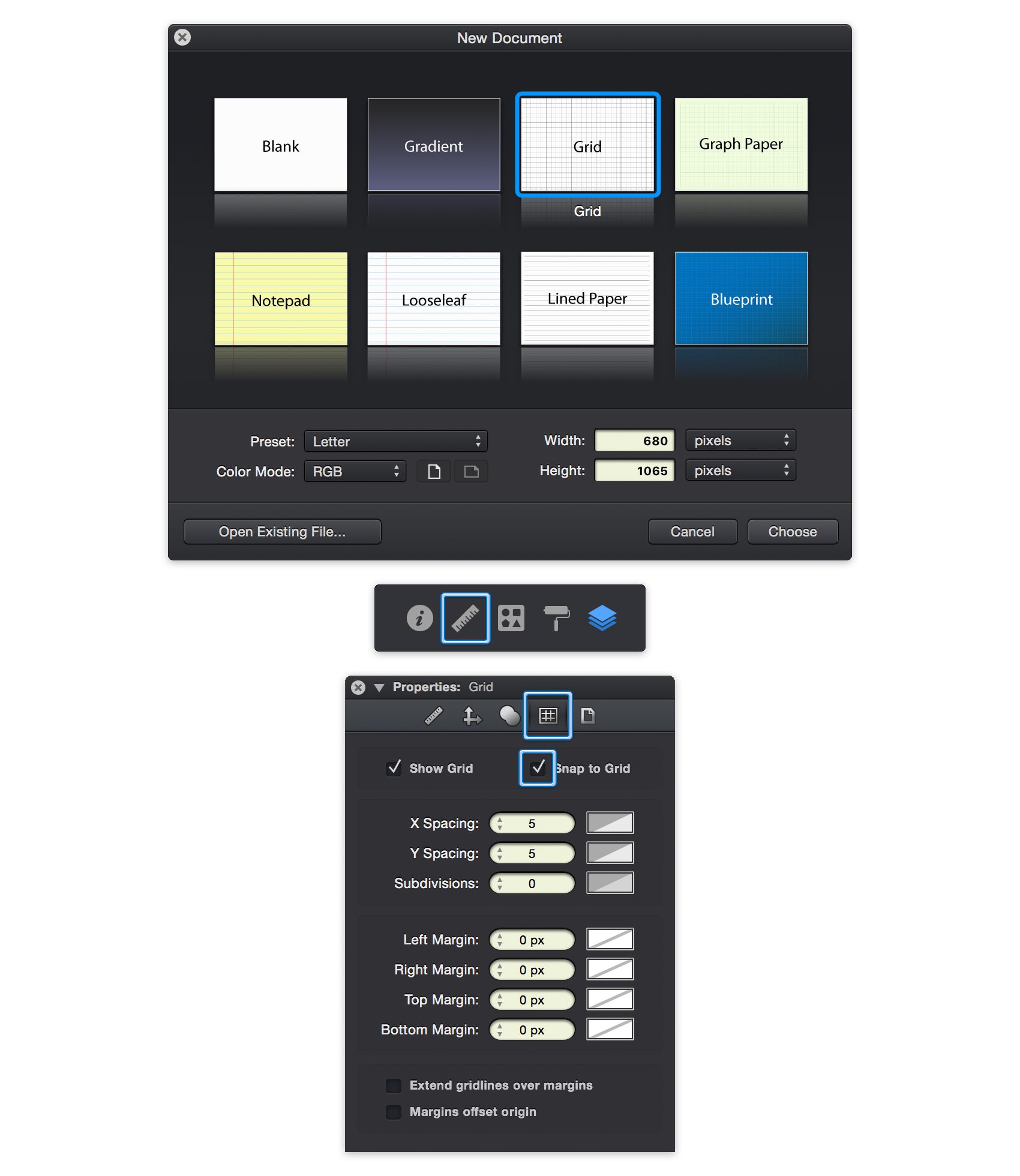
Step 2
Focus on the Toolbar and click the Stroke color well. Drag the Alpha slider to 0% to make your stroke invisible. Click the Fill color well and replace the existing color with R=74 G=179 B=232.
Pick the Ellipse Tool (O), focus on your canvas and create a 220 px circle. Hold the Shift key while dragging to easily create a perfect circle. Using the Move Tool (V), select your shape and place it exactly as shown in the following image (X: 340 px Y: 255 px).
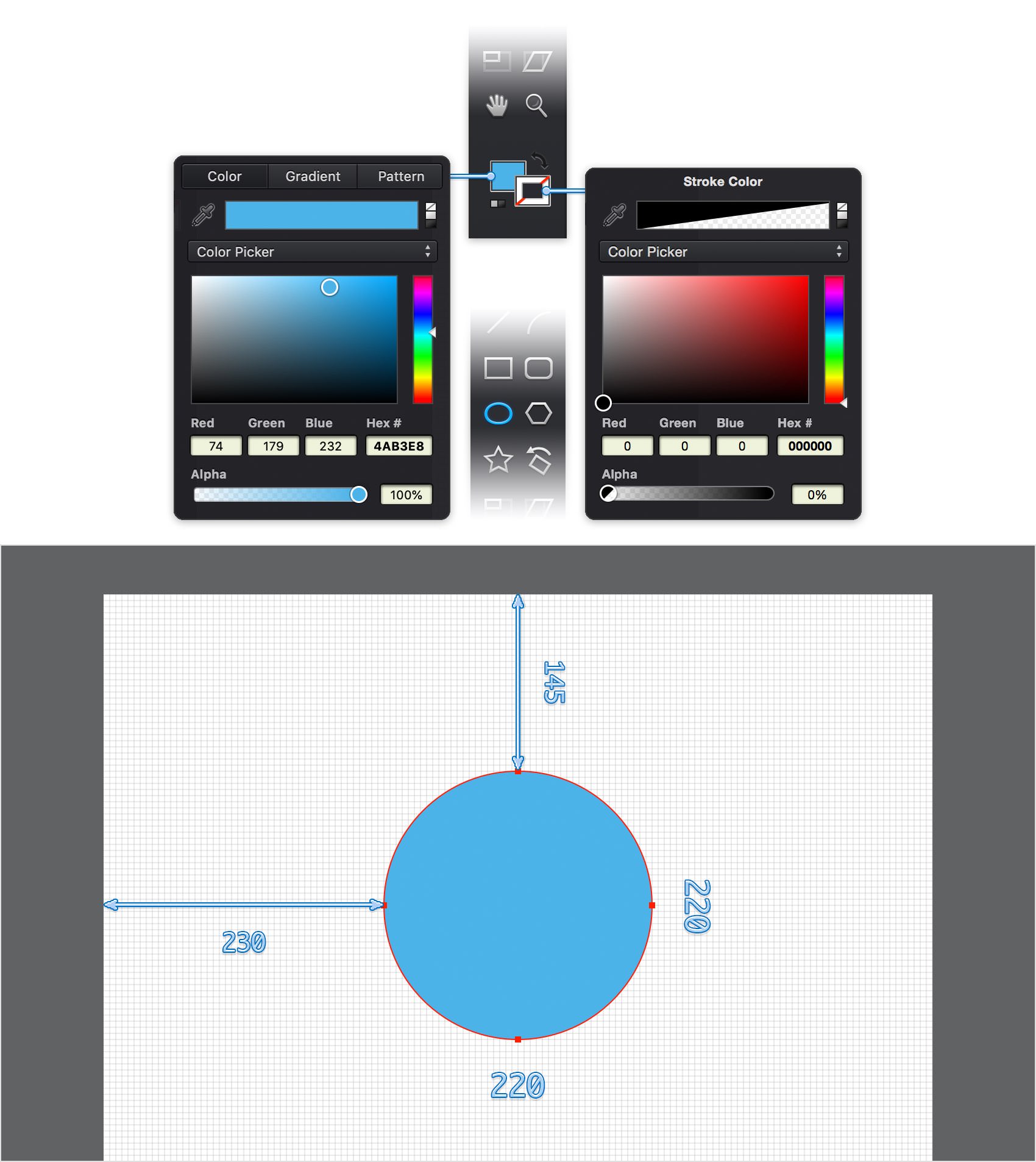
Step 3
Focus on your Toolbar and replace the existing Fill color with black (R=0 G=0 B=0). Using the Rectangle Tool (M), create a 110 x 220 px shape and place it as shown in the first image.
Pick the Move Tool (V) and select both shapes. Go to the Path Tools pane from the Properties panel and click the Subtract command.
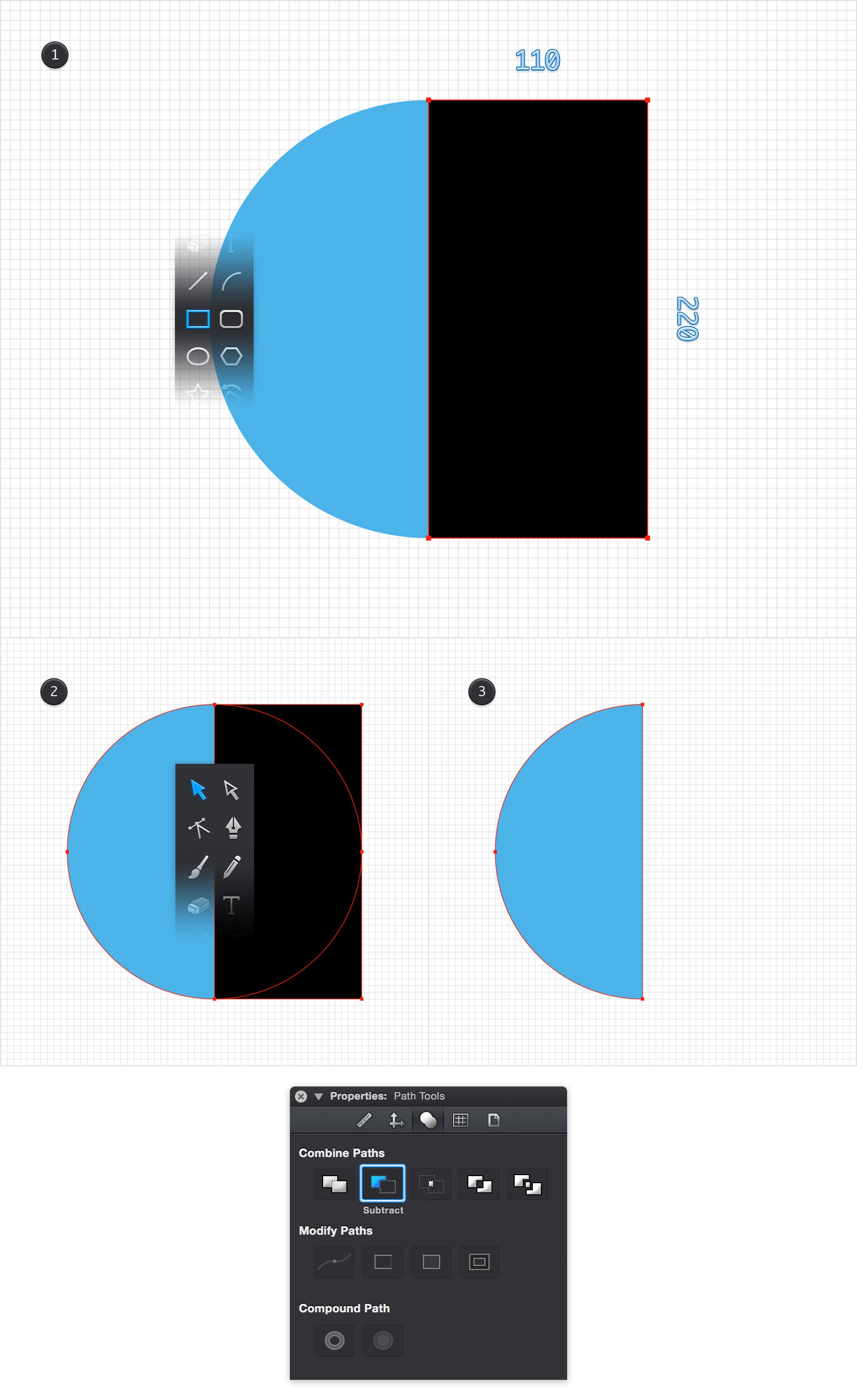
Step 4
Make sure that your shape is still selected, pick the Rotate Tool (R) and focus on the Tool Options bar. Set the Angle to 180 degrees and click the Copy button. This will create a copy of your selected shape and rotate it 180 degrees.
Select this newly made shape, replace the existing Fill color with R=255 G=180 B=0, and then place it exactly as shown in the third image (X: 395 px Y: 440 px).
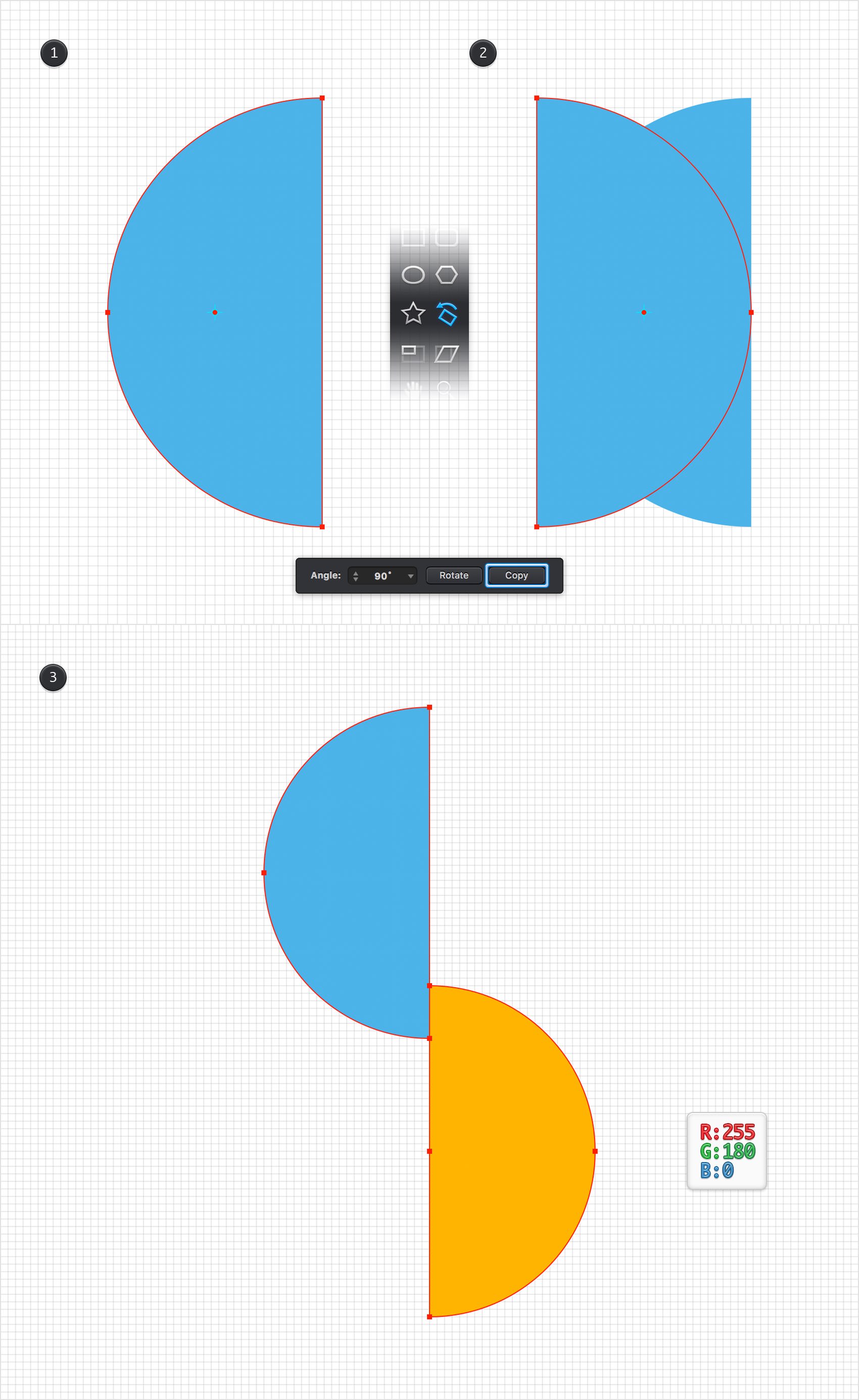
Step 5
Select your blue shape and duplicate it (Command + C > Command + V). Select the copy, place it as shown in the first image (X: 285 px Y: 625 px) and replace the existing Fill color with R=250 G=85 B=0.
Duplicate your yellow shape. Select the copy, place it as shown in the second image (X: 395 px Y: 810 px) and replace the existing Fill color with R=0 G=196 B=112.
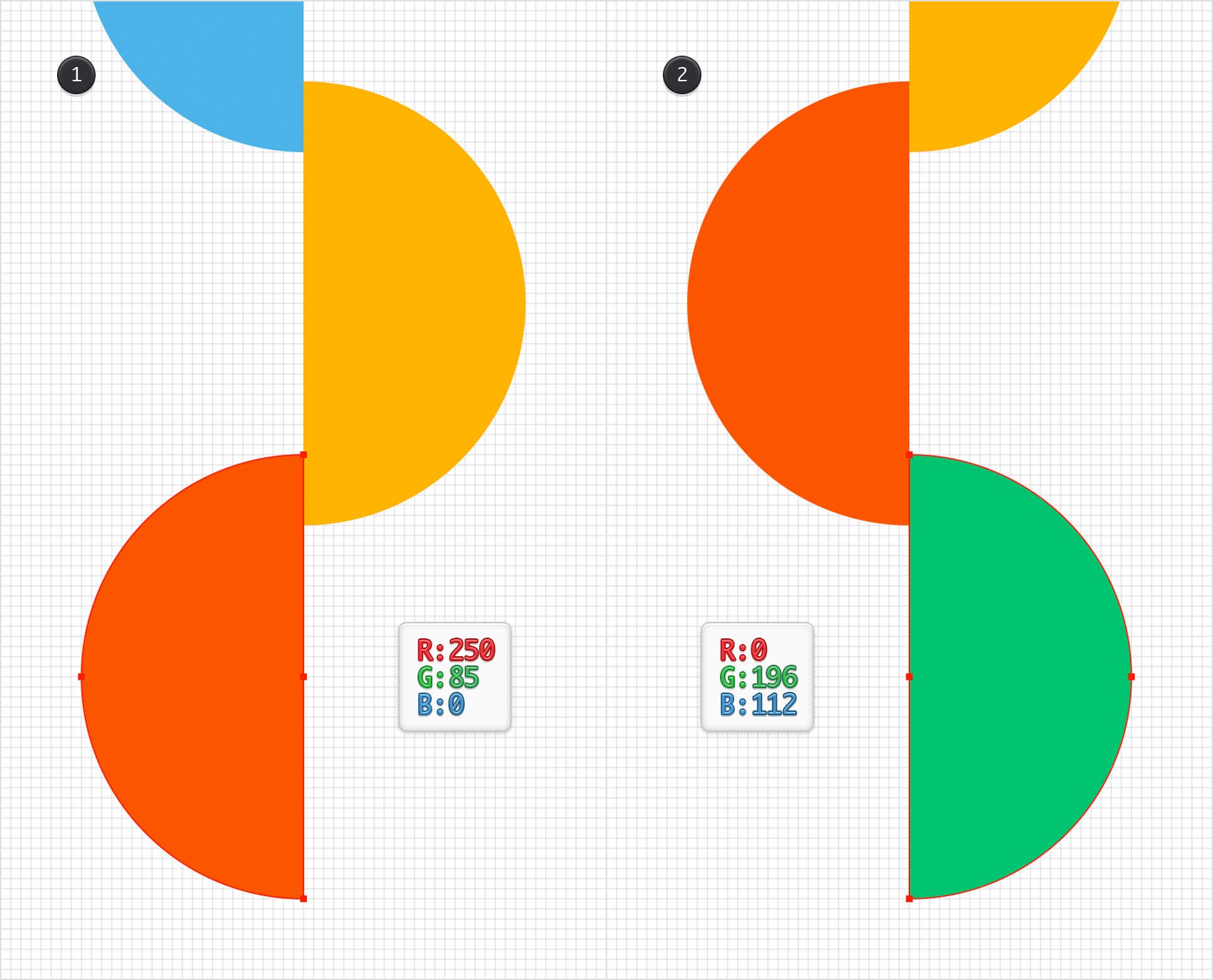
Step 6
Focus on your green half circle. Pick the Ellipse Tool (O) and create a 220 px circle. Fill this new shape with R=0 G=196 B=112 and place it as shown in the first image. Using the same tool, create a 150 px circle, fill it with black and place it as shown in the second image.
Pick the Move Tool (V), hold down the Shift key and select both shapes made in this step. Go to the Path Tools pane from the Properties panel and click that same Subtract command. In the end, your shape should look like in the fourth image.
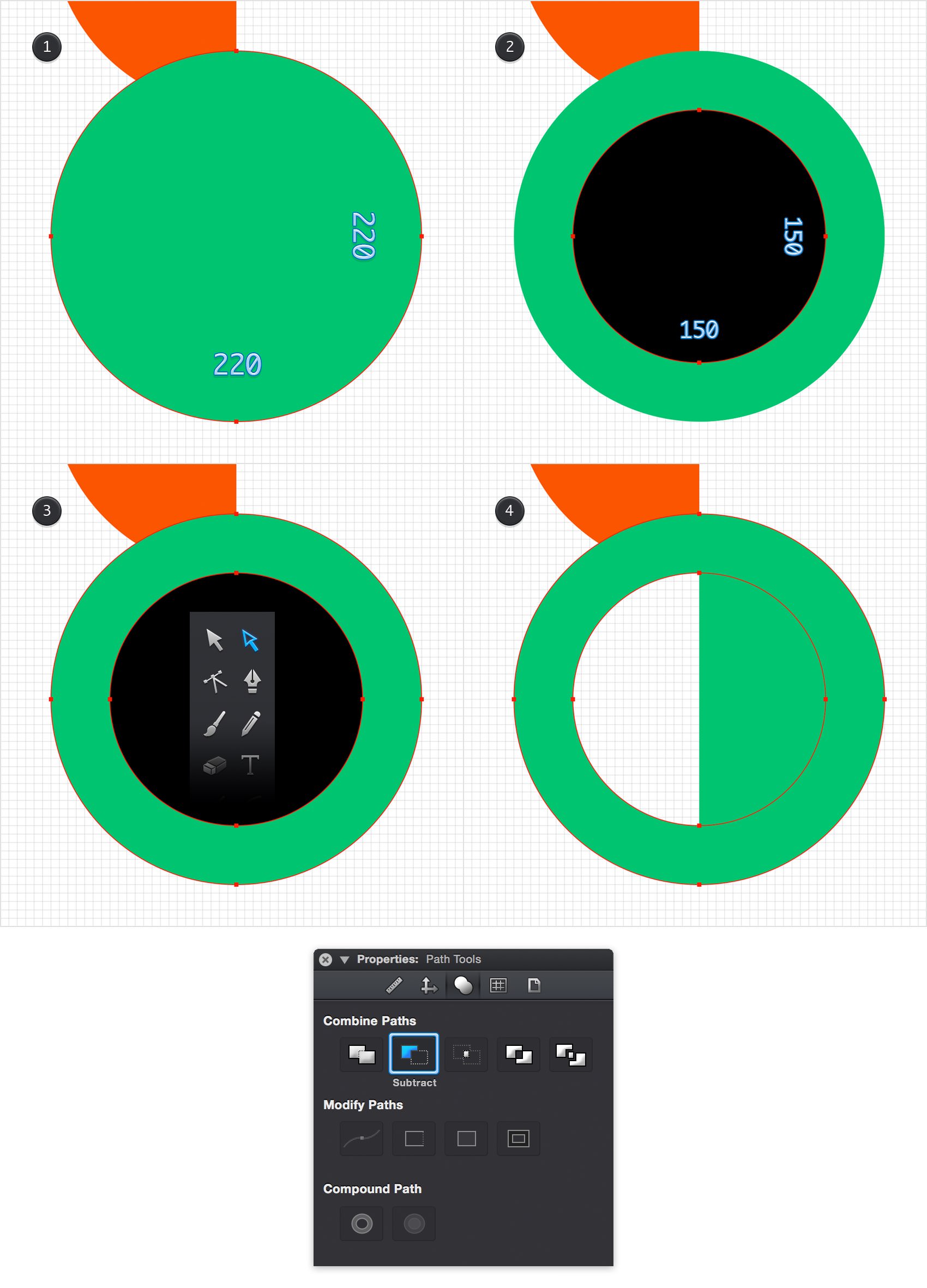
Step 7
Pick the Rectangle Tool (M), create a 110 px square and place it as shown in the first image. Select this new shape along with the one made in the previous step and click the Intersect command from the Path Tools pane. Using the Move Tool (V), move the resulting shape as shown in the third image.
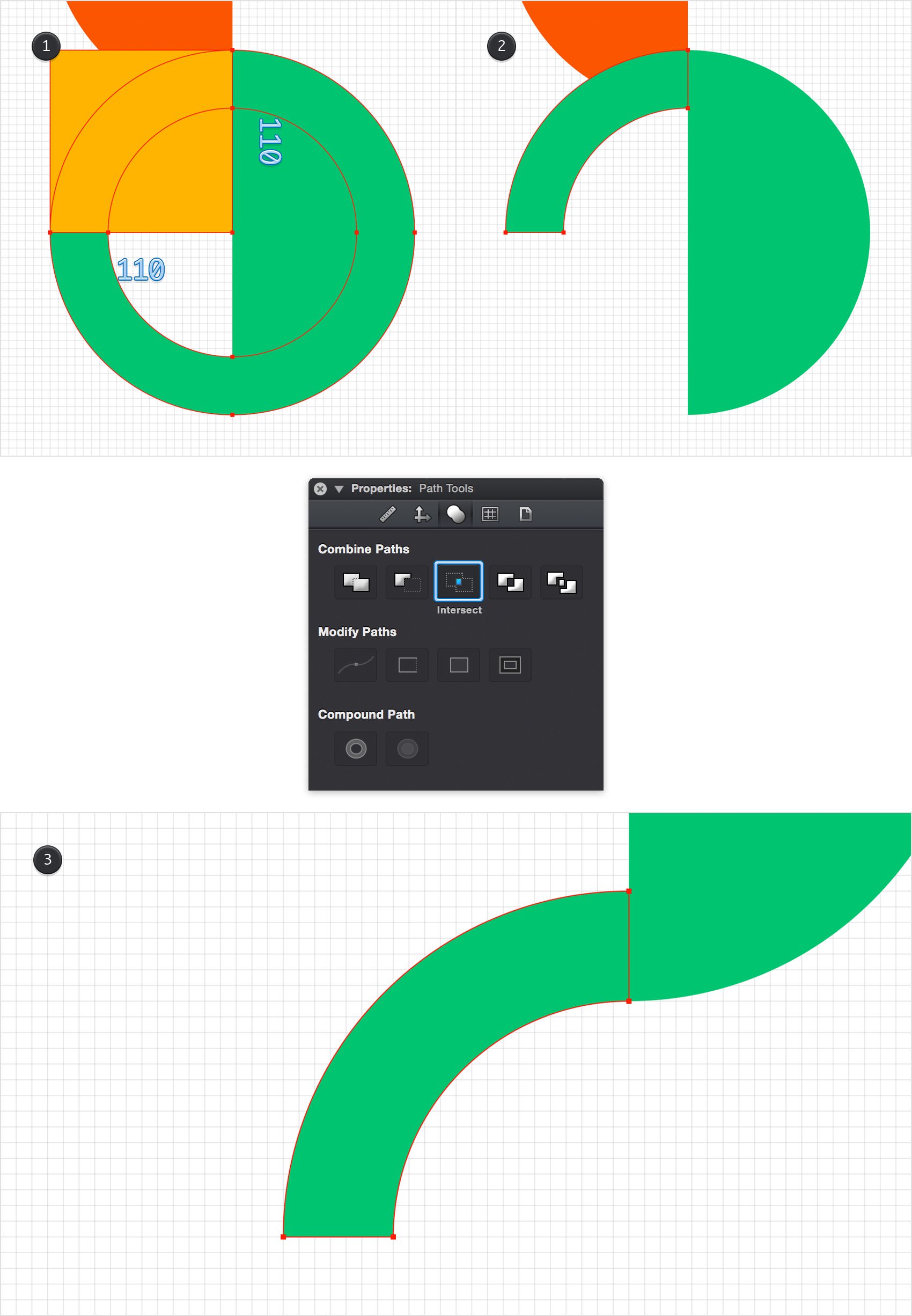
Step 8
Pick the Rectangle Tool (M) and create a 35 x 70 px shape. Fill this new shape with R=0 G=196 B=112 and place it as shown in the first image.
Using the Move Tool (V), select the two shapes highlighted in the second image and click the Union command from the Path Tools pane.
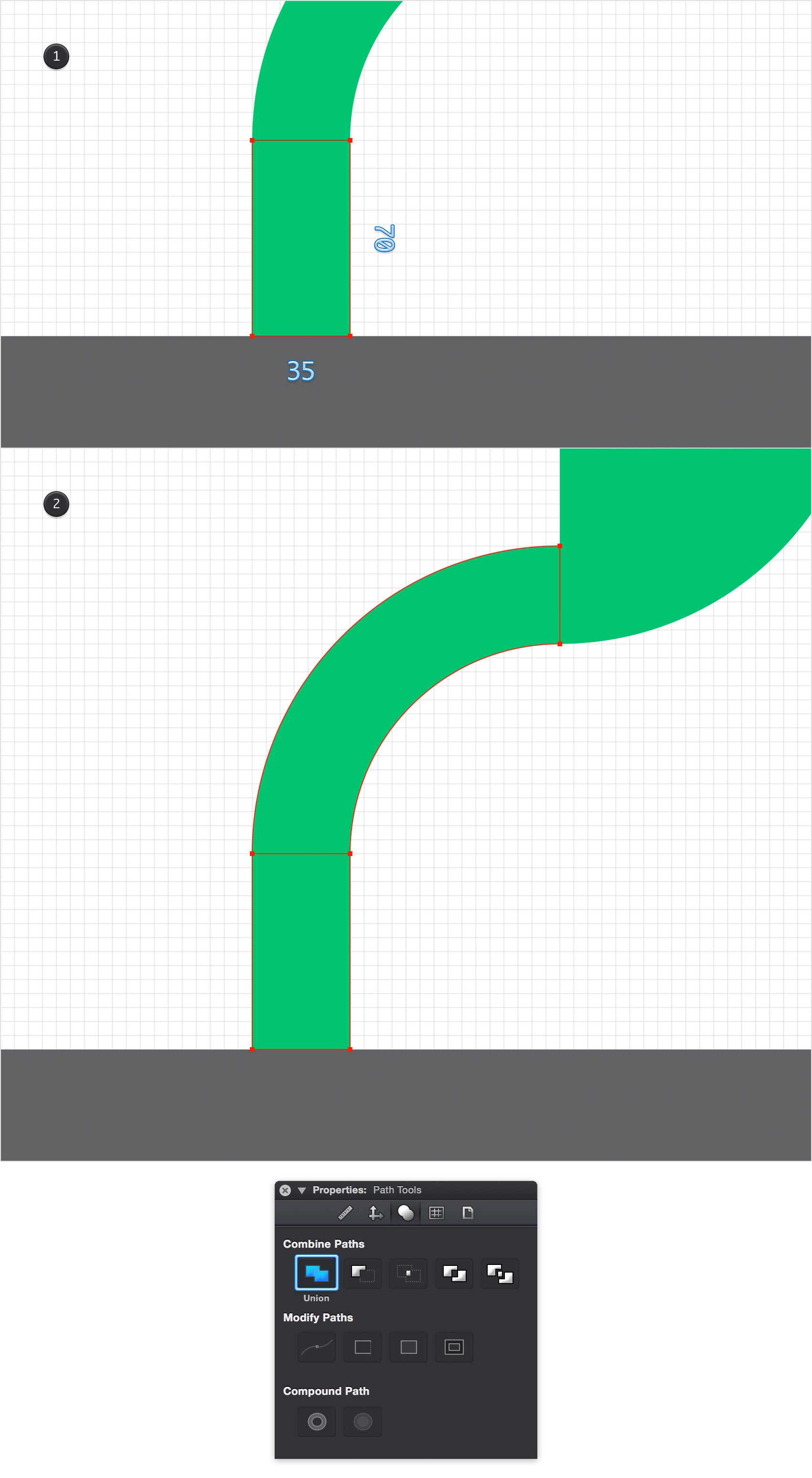
Step 9
Duplicate the shape highlighted in the first image (Command + C > Command + V). Select the copy and replace the existing Fill color with R=74 G=179 B=232. Rotate this shape 180 degrees and place it as shown in the second image.
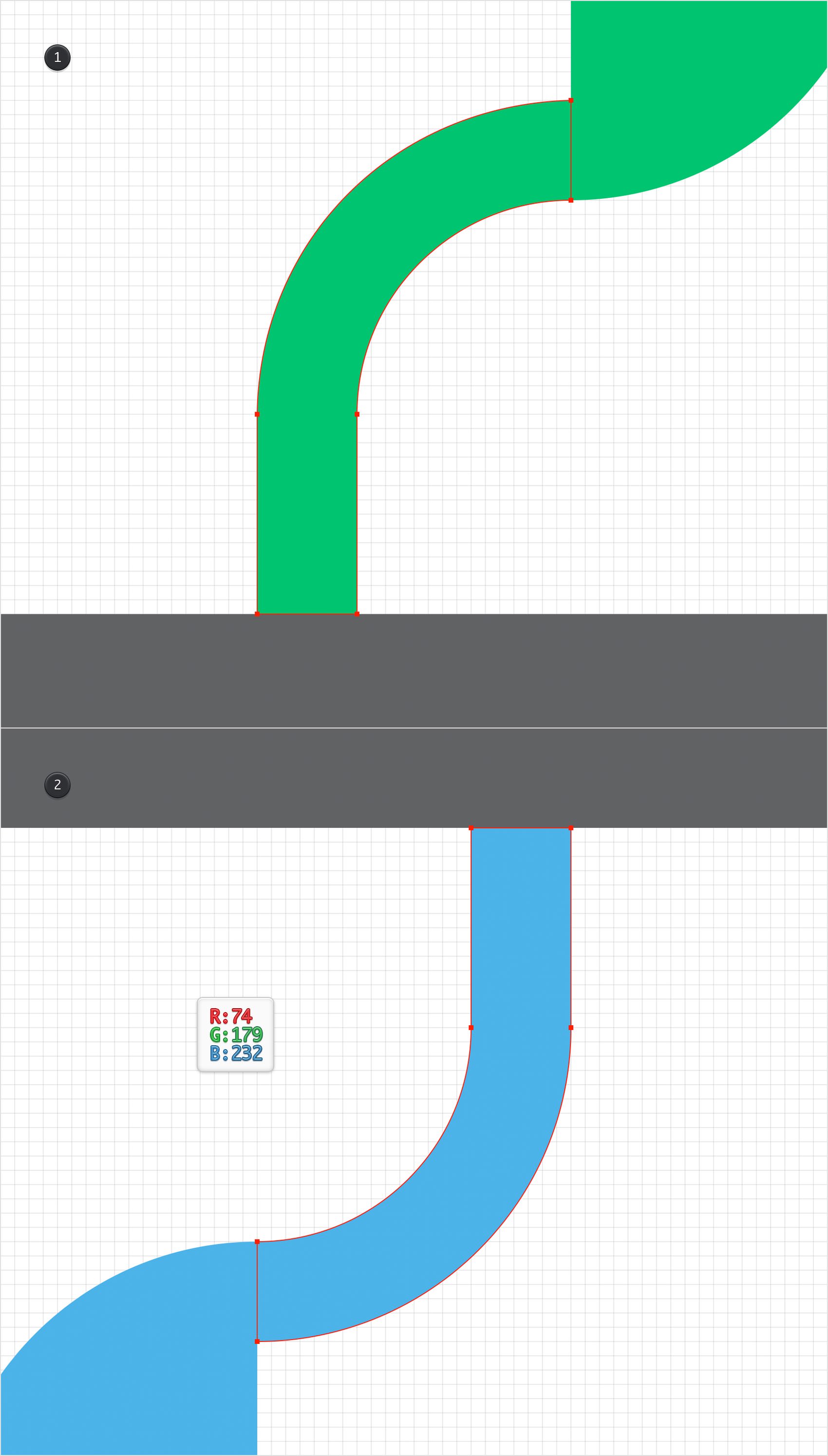
Step 10
Focus on the Layers panel, double click the name of the existing layer and rename it "Path". Use that plus button from the bottom of the panel to add a second layer. Rename it "Step 1" and make sure that it stays selected, as the new shapes you are about to create will go here.
Pick the Ellipse Tool (O) and create a 150 px circle. Fill this new shape with white (R=255 G2=255 B=255) and place it as shown in the following image.
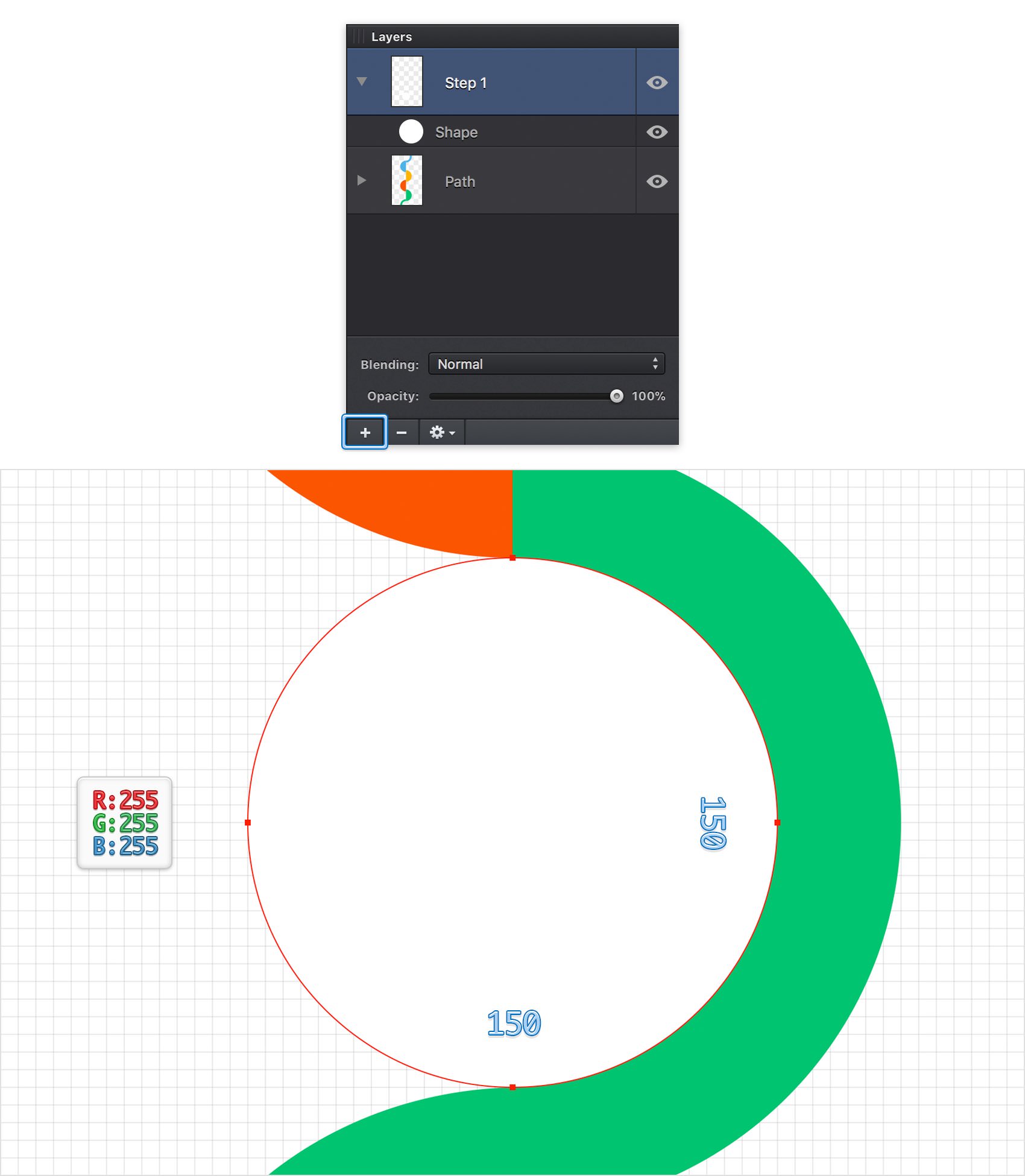
Step 11
Make sure that your white circle is still selected and add a copy in the same place (Command + C > Command > Shift + V). Pick the Ellipse Tool (O) and create a 135 px circle. Fill this new shape with black and place it as shown in the first image.
Using the Move Tool (V) and the Shift key, select both circles added in this step and click the Intersect command from the Path Tools pane. Select the resulting shape and open the Effects pane from the Appearance panel – click the leftmost inspector panel icon to open or close the Appearance panel whenever you want.
Click the Fill color well, set the color to black and drag that Alpha slider to 5%. With this shape still selected, hit Option + Command + C (or go to Edit > Copy Style in the menu bar) to copy its style.
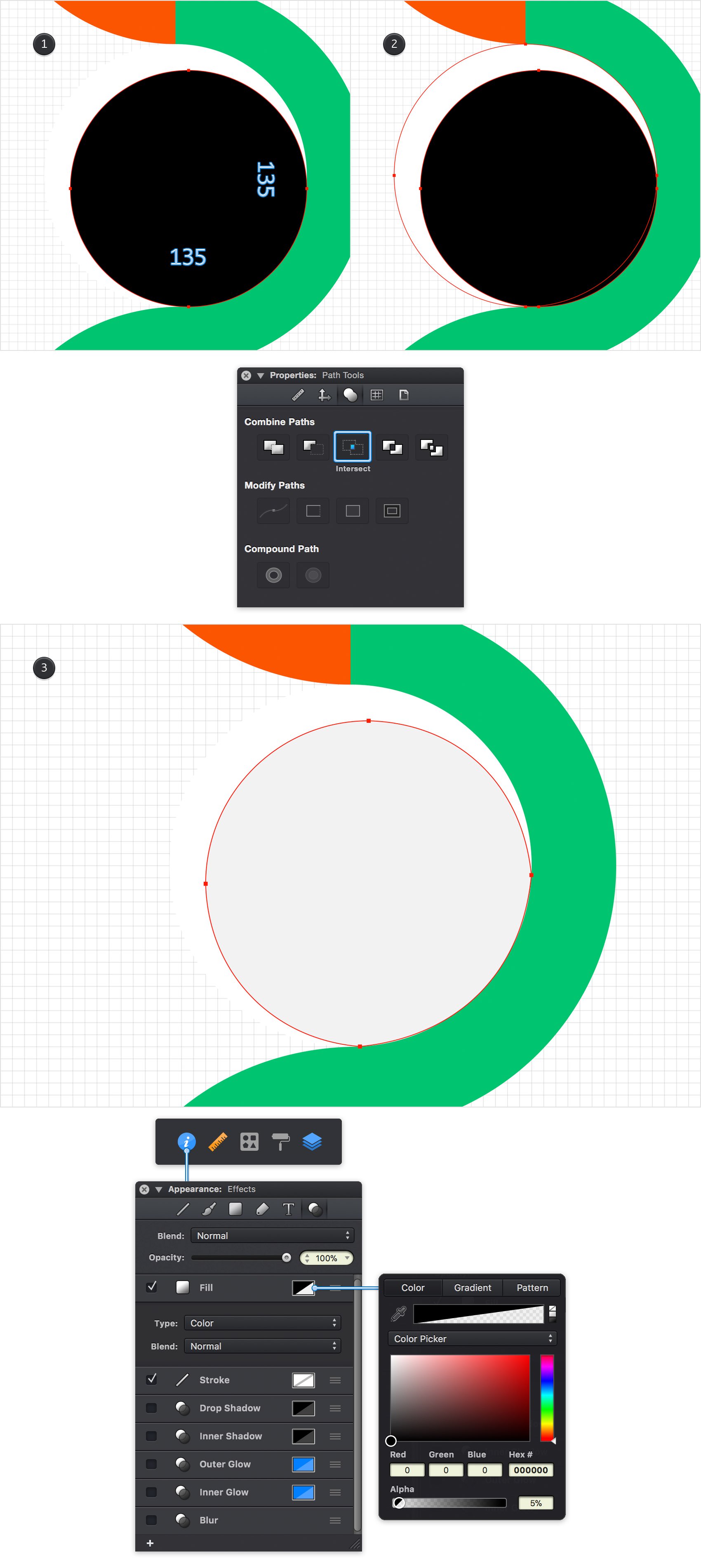
Step 12
Select your white circle, focus on the Effects pane and activate the existing Drop Shadow effect. Enter 6 pt in the X and Y boxes and then drag that Size slider to 12 pt. Click the color well of this effect and drag the Alpha slider to 30%.
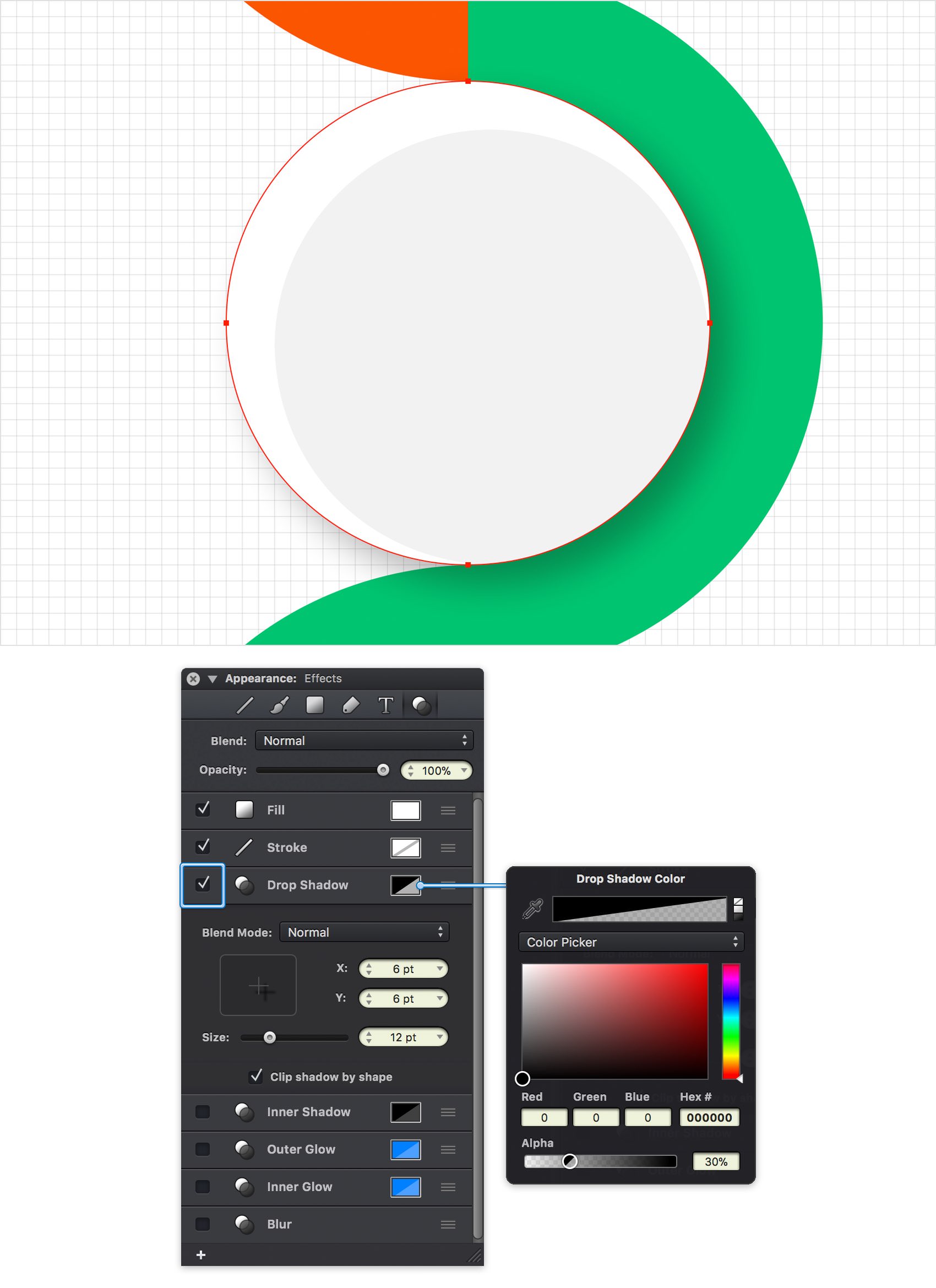
Step 13
Pick the Ellipse Tool (O) and create a 120 px circle. Fill this new shape with white and place it as shown in the following image.
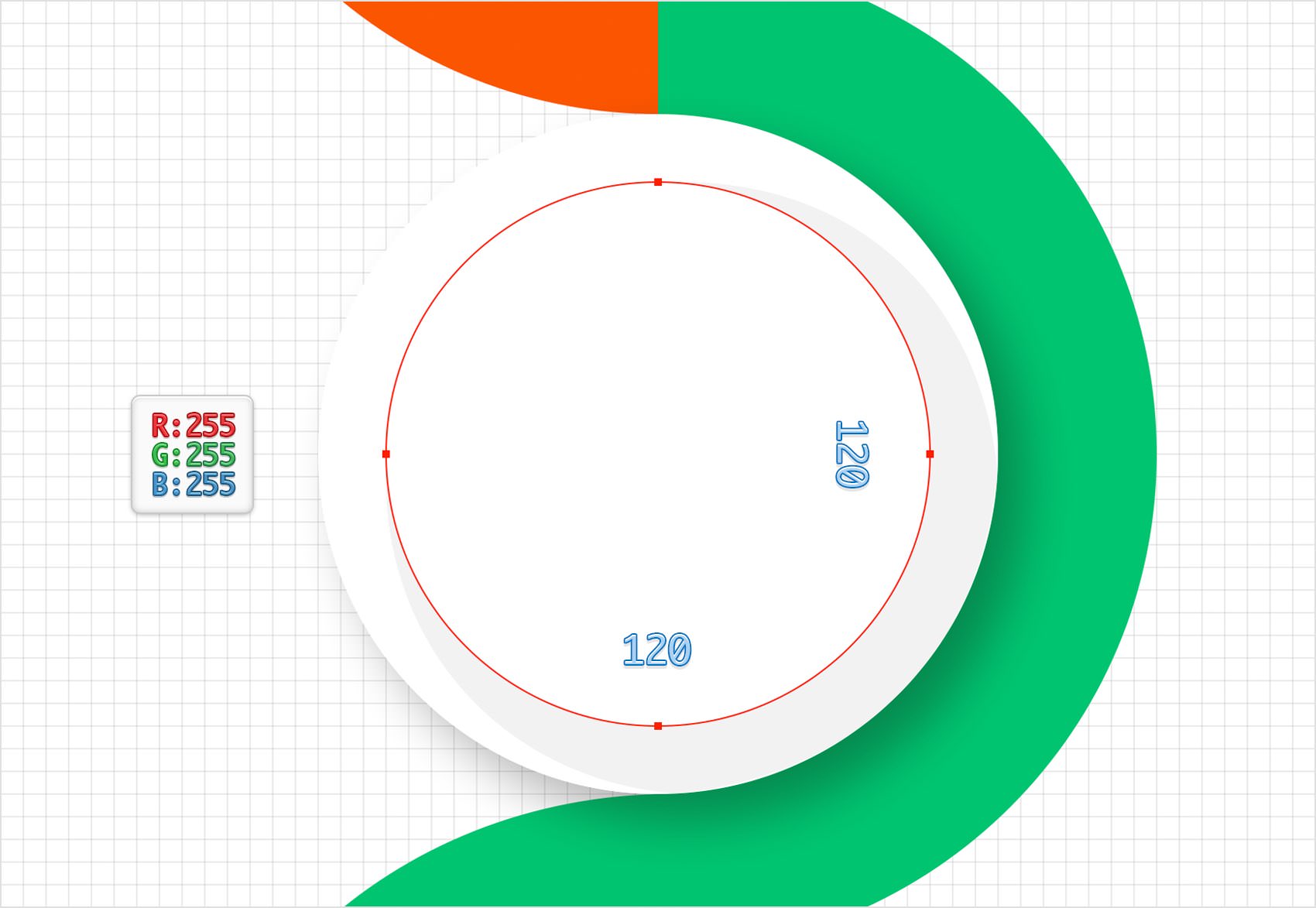
Step 14
Make sure that the white circle made in the previous step is still selected and add a copy in the same place (Command + C > Command + Shift + V). Pick the Ellipse Tool (O) and create a 105 px circle. Fill this new shape with black and place it as shown in the first image.
Using the Move Tool (V) and the Shift key, select both circles added in this step and click the Intersect button from the Path Tools pane. Select the resulting shape and hit Option + Command + V to paste the style copied in the eleventh step.
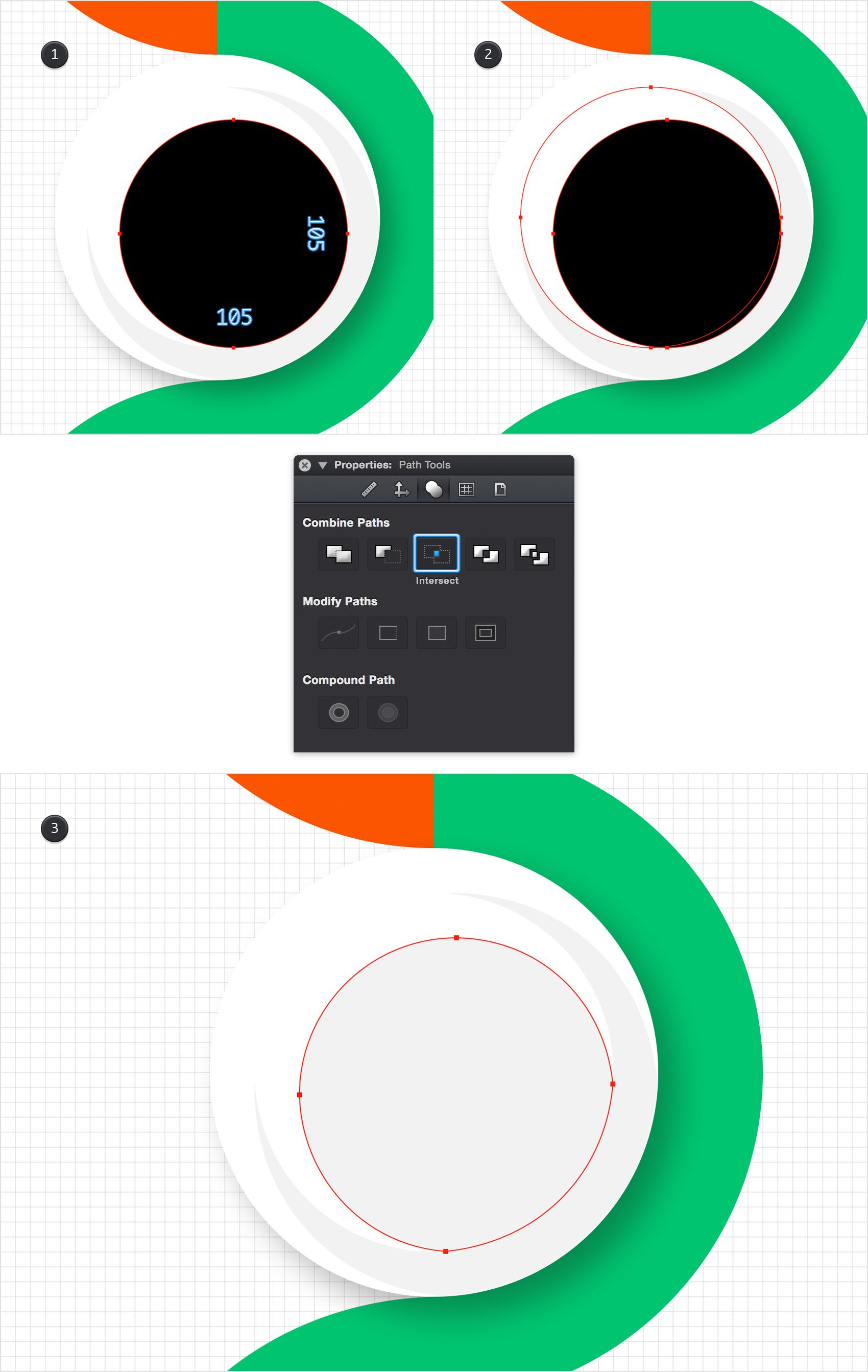
Step 15
Select your 120 px, white circle and focus on the Effects pane. Activate the existing Drop Shadow effect and enter the attributes shown below. Once you're done, copy the style of this shape (Option + Command + C).
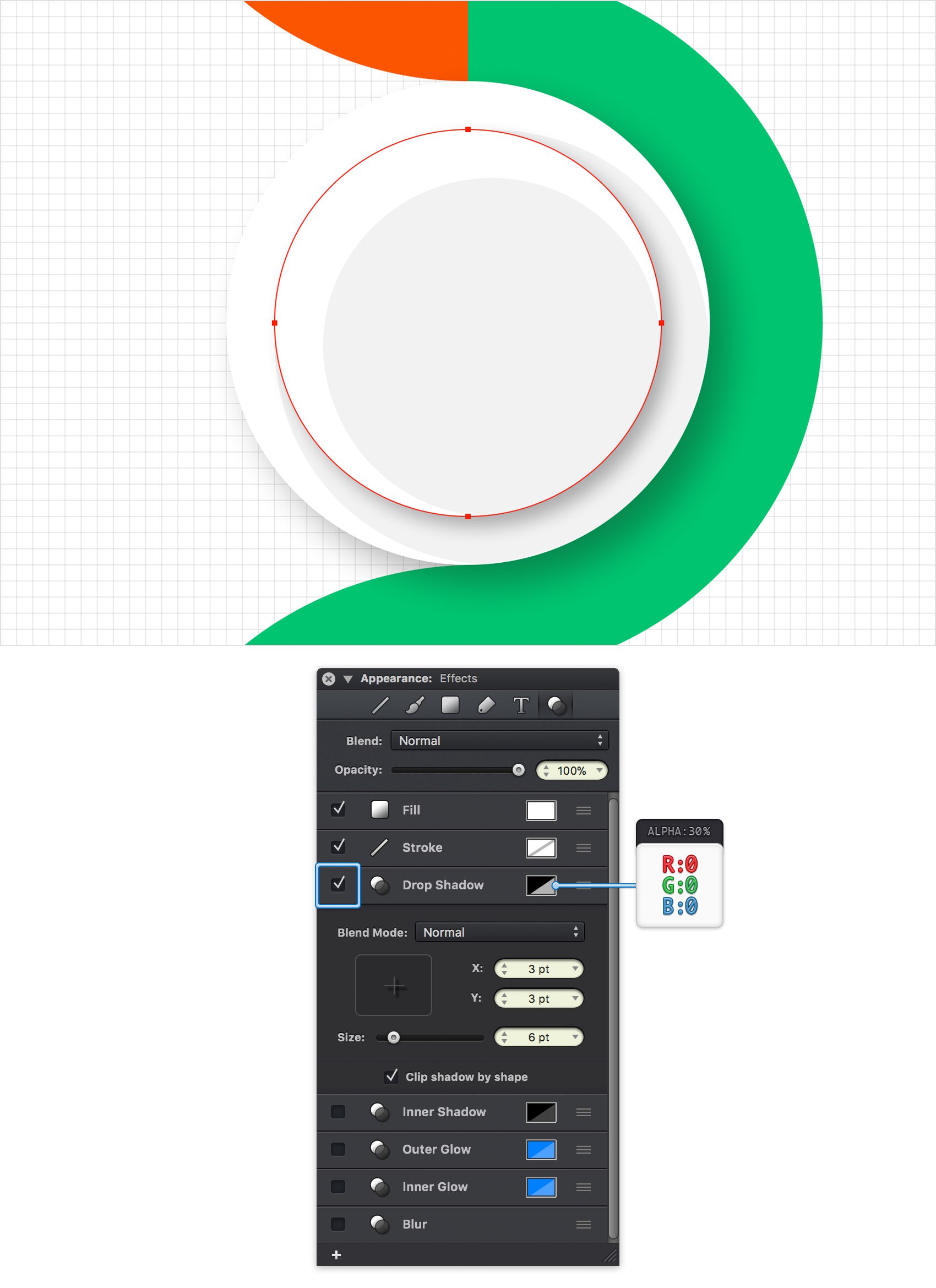
Step 16
Pick the Ellipse Tool (O) and create a 90 px circle. Place this new shape as shown in the following image and then hit Option + Command + V.
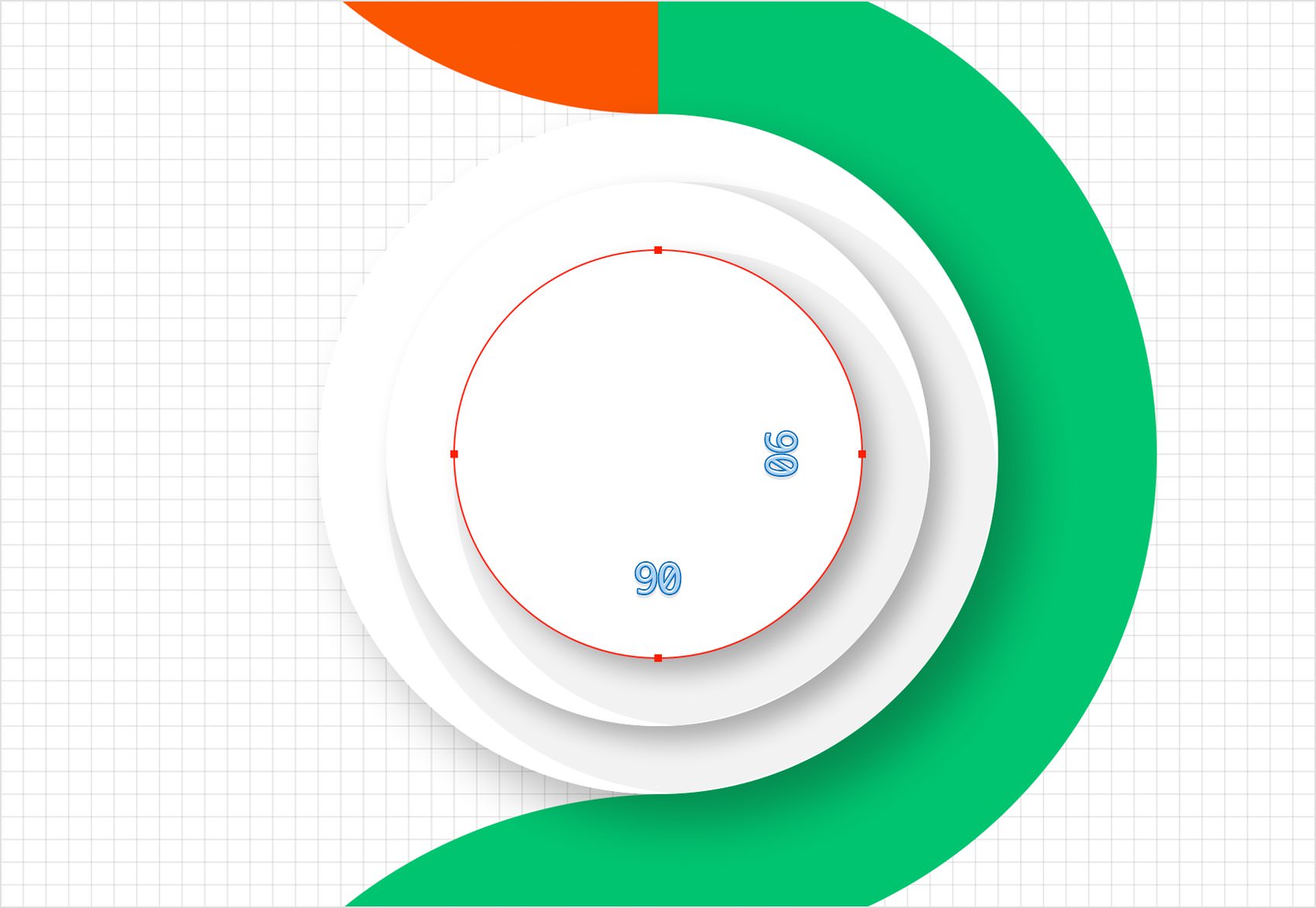
Step 17
Focus on the Layers panel, right click on the top layer and go to Duplicate Layer. Rename that layer copy "Step 2" and make sure that it stays selected.
Using the Move Tool (V), select all the shapes from your active layer and move them up, as shown in the second image.
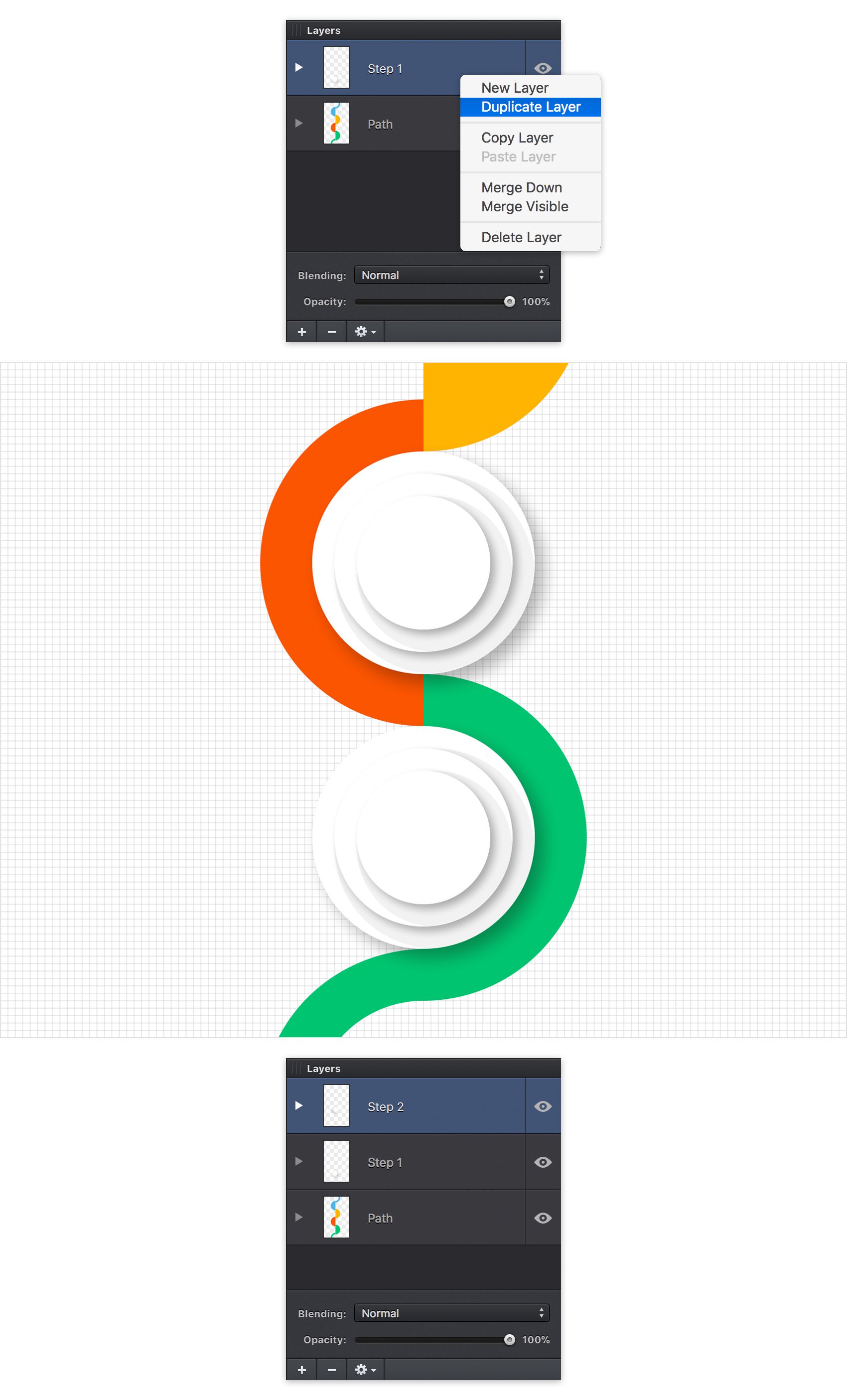
Step 18
Make sure that the shapes from your activate layer are still selected and go to Modify > Rotate and Transform > Flip Horizontal.
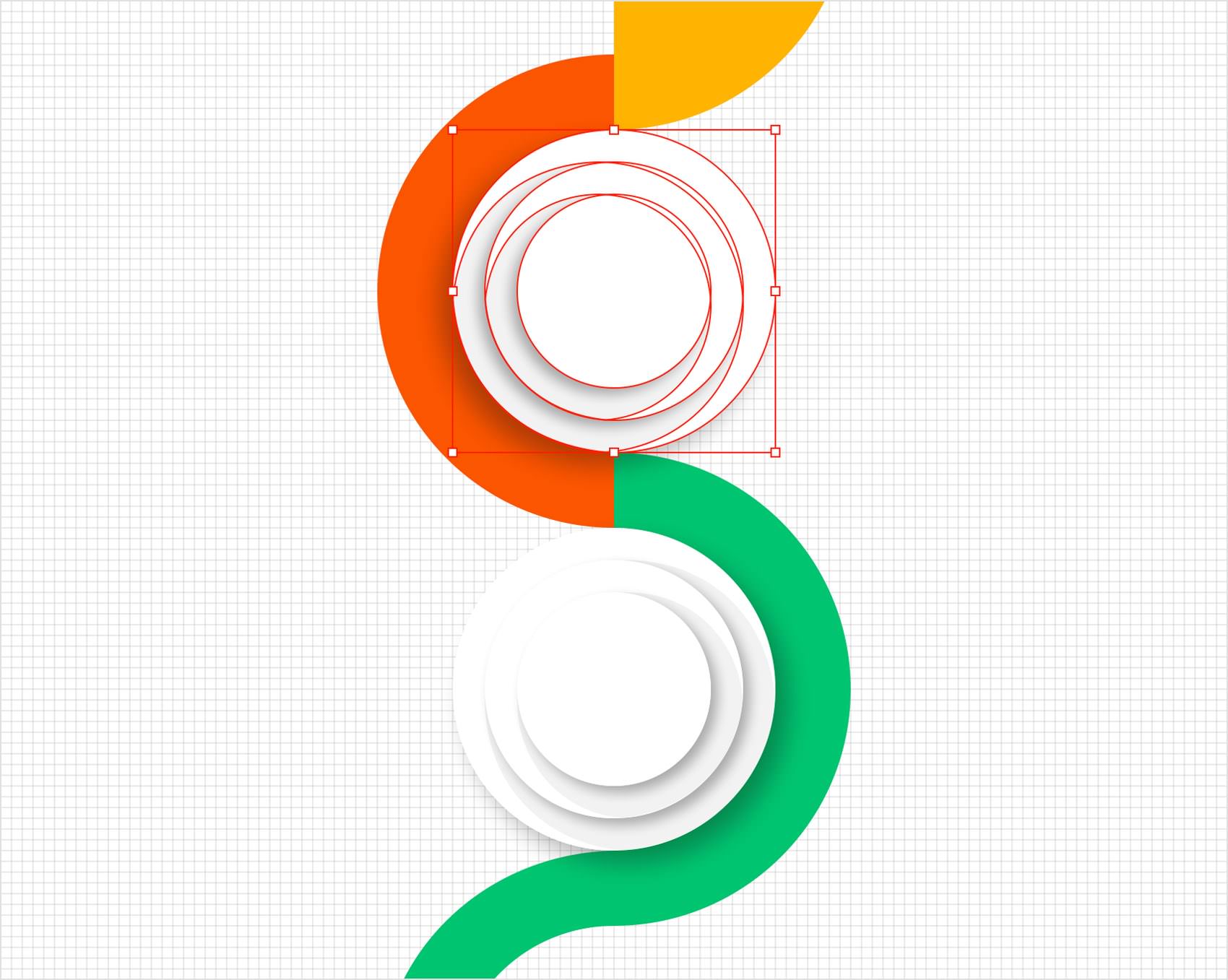
Step 19
Keep focusing on the shapes from your active layer and open the Effects pane. Select the largest white circle and inverse the X value used for the existing Drop Shadow effect, from 6 pt to -6 pt.
Select the other two white circles and return to the Effects pane. Again, focus on the existing Drop Shadow effect and inverse that same X value. In the end, things should look like in the following image.
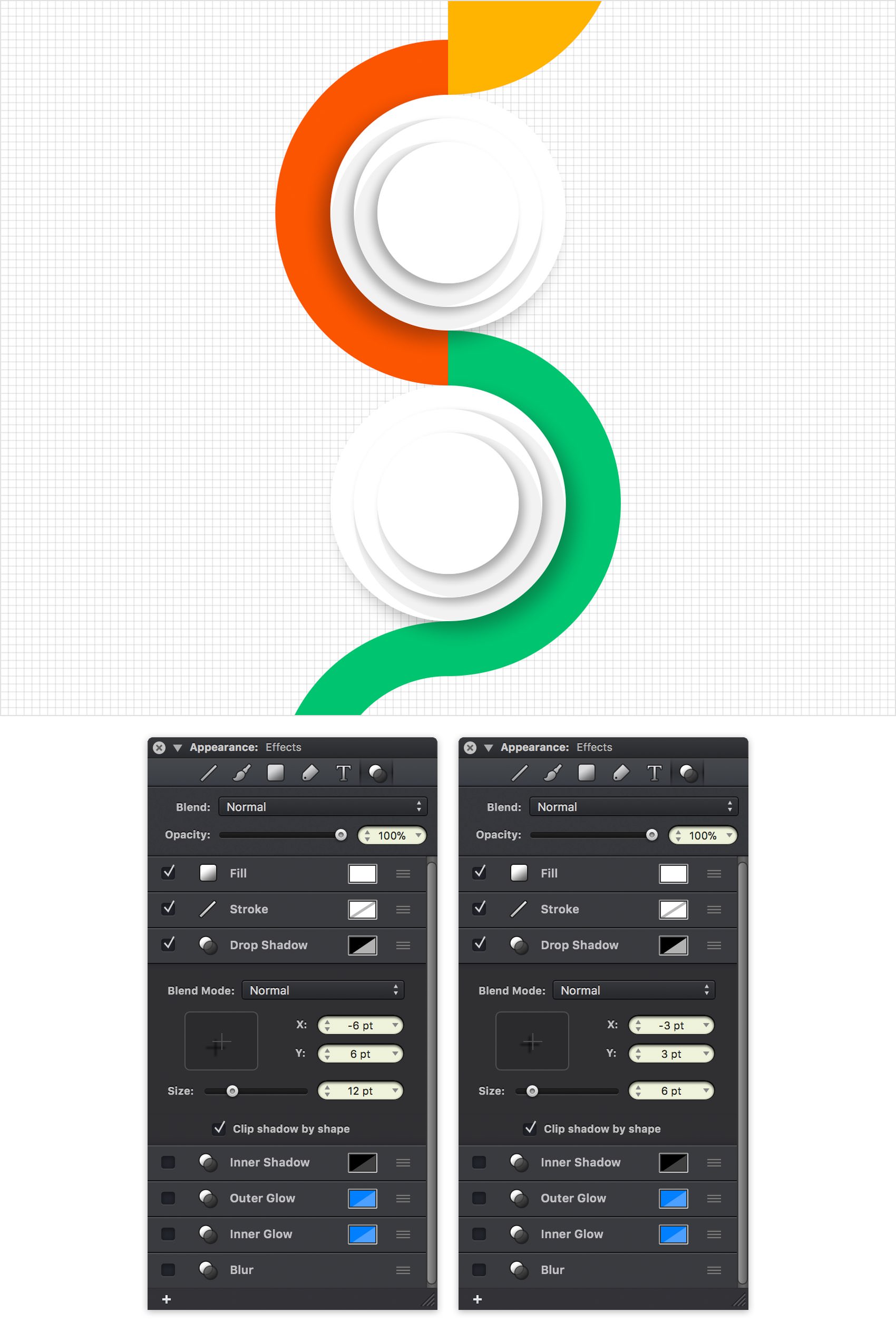
Step 20
Focus on the Layers panel and duplicate the "Step 1" and "Step 2" layers.
Select the copy of "Step 1" layer and rename it "Step 3". Select all the shapes that lie inside this layer and drag them above that yellow half circle, as shown in the second image.
Select the copy of "Step 2" layer and rename it "Step 4". Select all the shapes that lie inside this layer and drag them above that blue half circle, as shown in the second image.
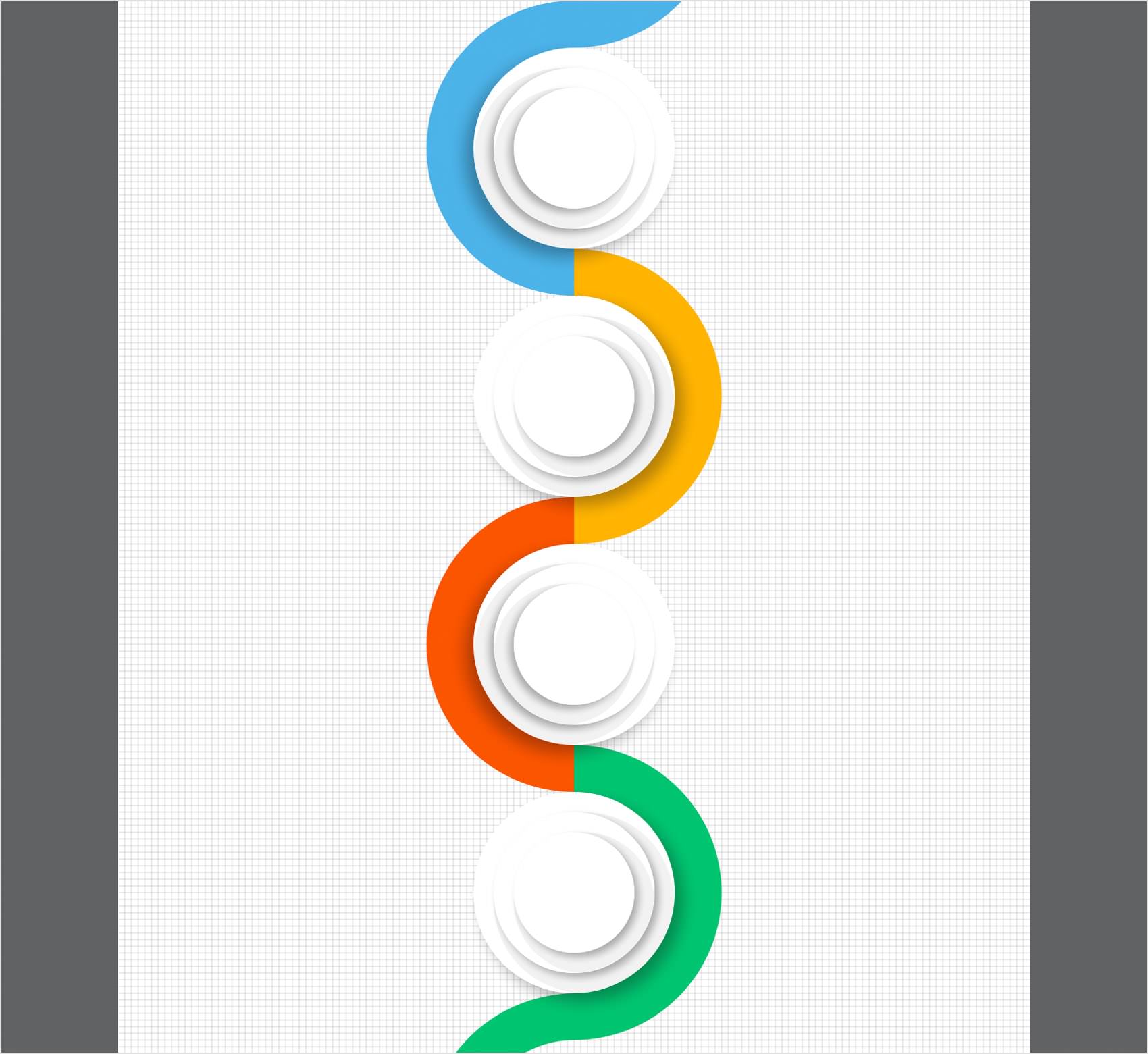
Step 21
Keep focusing on the Layers panel and add a new layer. Drag it to the top of the panel, rename it "Black" and make sure that it stays selected.
Pick the Rectangle Tool (M), create a 40 px square and place it as shown in the following image. Make sure that this shape stays selected and focus on the Effects pane. Click the Fill color well, set the color to black and drag that Alpha slider to 30%.
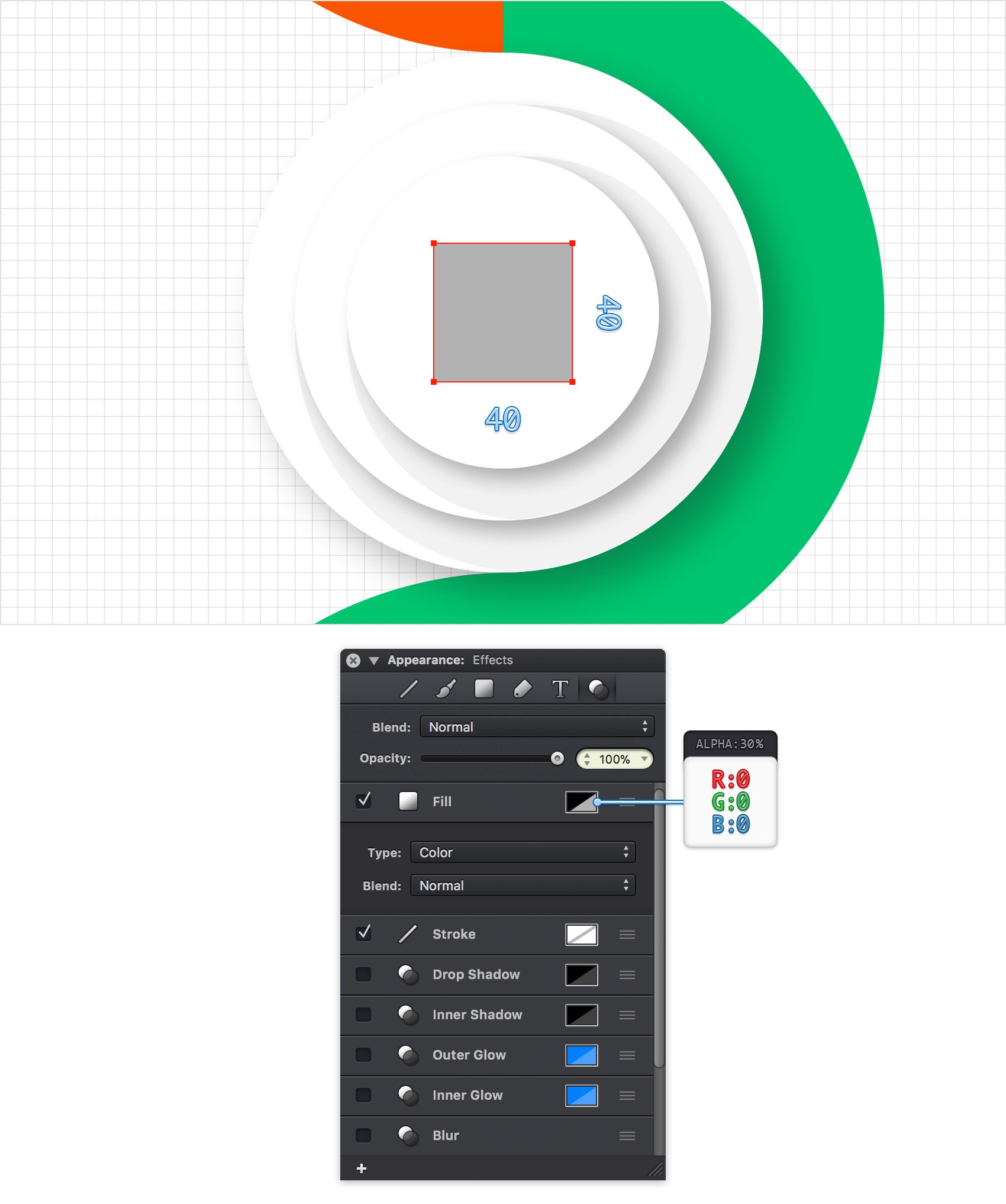
Step 22
Add three copies of your black square (Command + C > Command + V) and place them as shown in the following image. These four shapes won't be part of your final design. You're only going to use them as a simple guide.
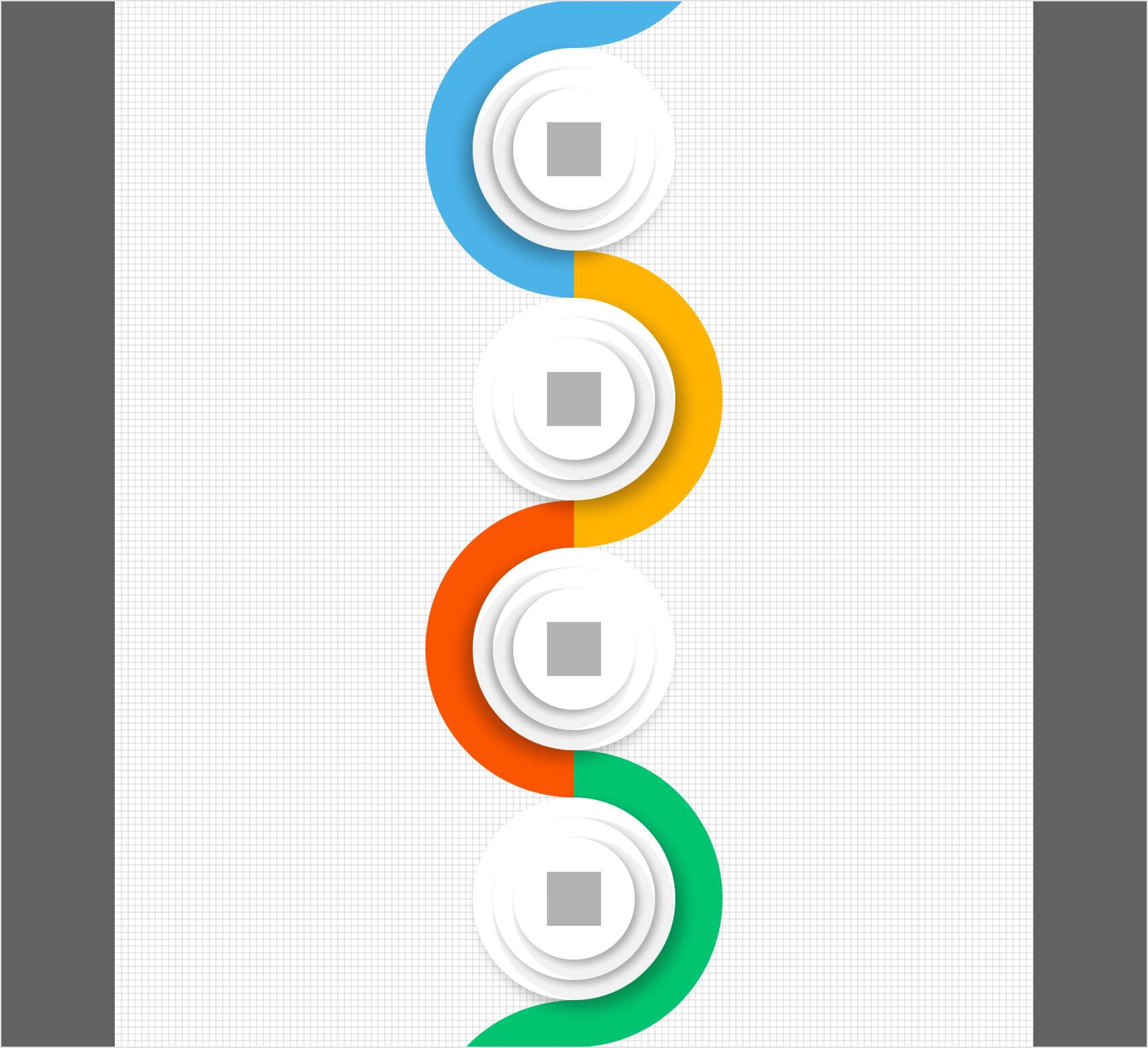
Step 23
Go to the Layers panel and add a new layer. Drag it to the top of the panel, rename it "Icons" and make sure that it stays selected.
Focus on your bottom, black square. Pick the Ellipse Tool (O), create a 40 px circle and place it as shown in the first image. With this new shape selected, move to the the Effects pane.
First, make sure that the Fill is invisible and then select the Stroke. Drag that Width slider to 4 pt and set the Position to Inside, and then click the color well of this Stroke. Set the color to R=54 G=63 B=68 and drag the Alpha slider to 100%.
Use the same tool to create a 20 px circle. Place it as shown in the second image and apply the same Effects attributes used for the 40 px circle.
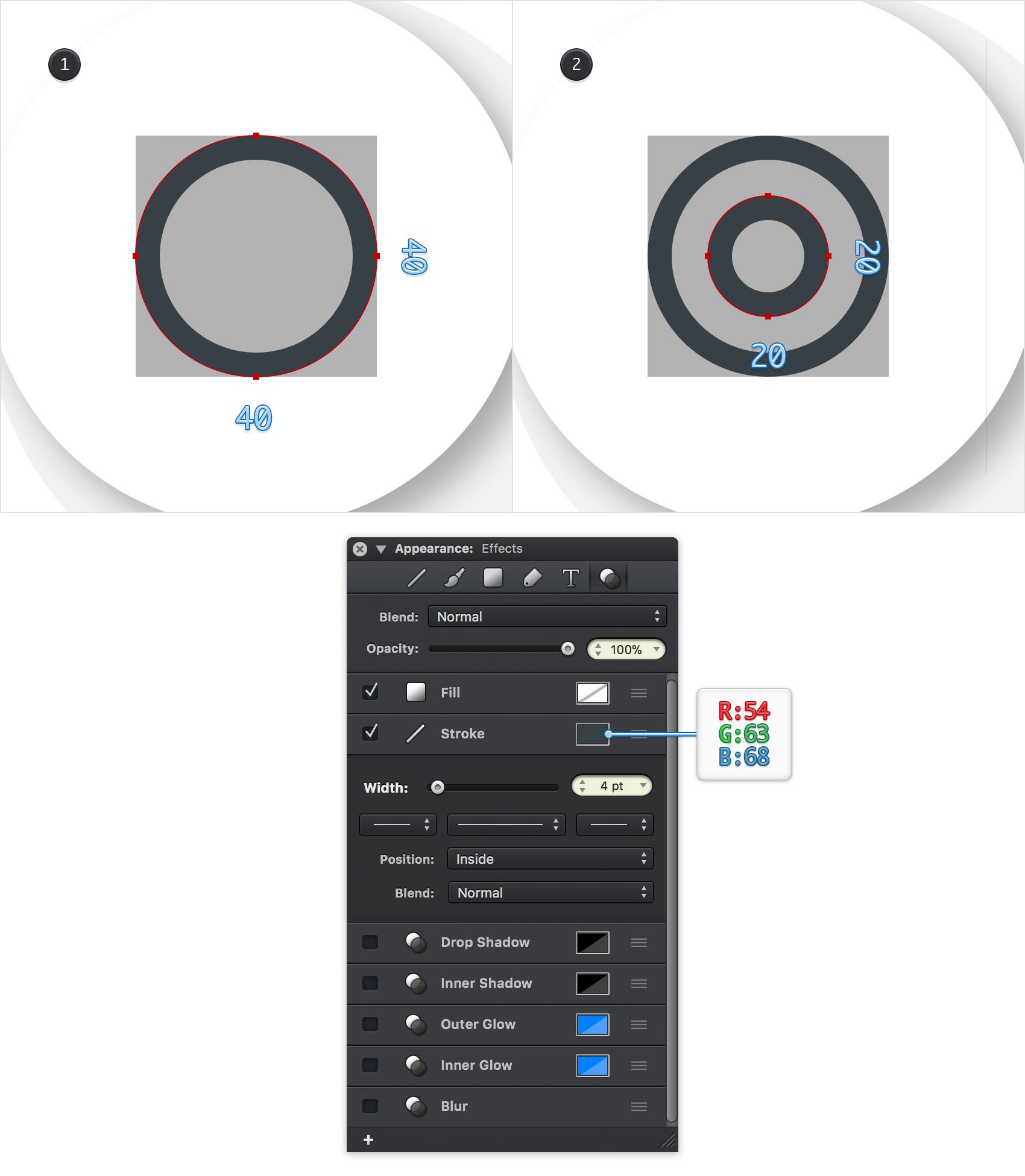
Step 24
Now, you will need a grid every 1px which means that you need to return to the Grid pane from the Properties panel and enter 1 px in both Spacing boxes.
Using the Line Tool (L), create a 36 px, vertical path and place it as shown in the first image. Add a 4 pt stroke for this new path, set the Position to Center and the color to R=54 G=63 B=68.
Make sure that your vertical path stays selected and switch to the Rotate Tool (R). Set the Angle to 90 degrees and then click the Copy button.
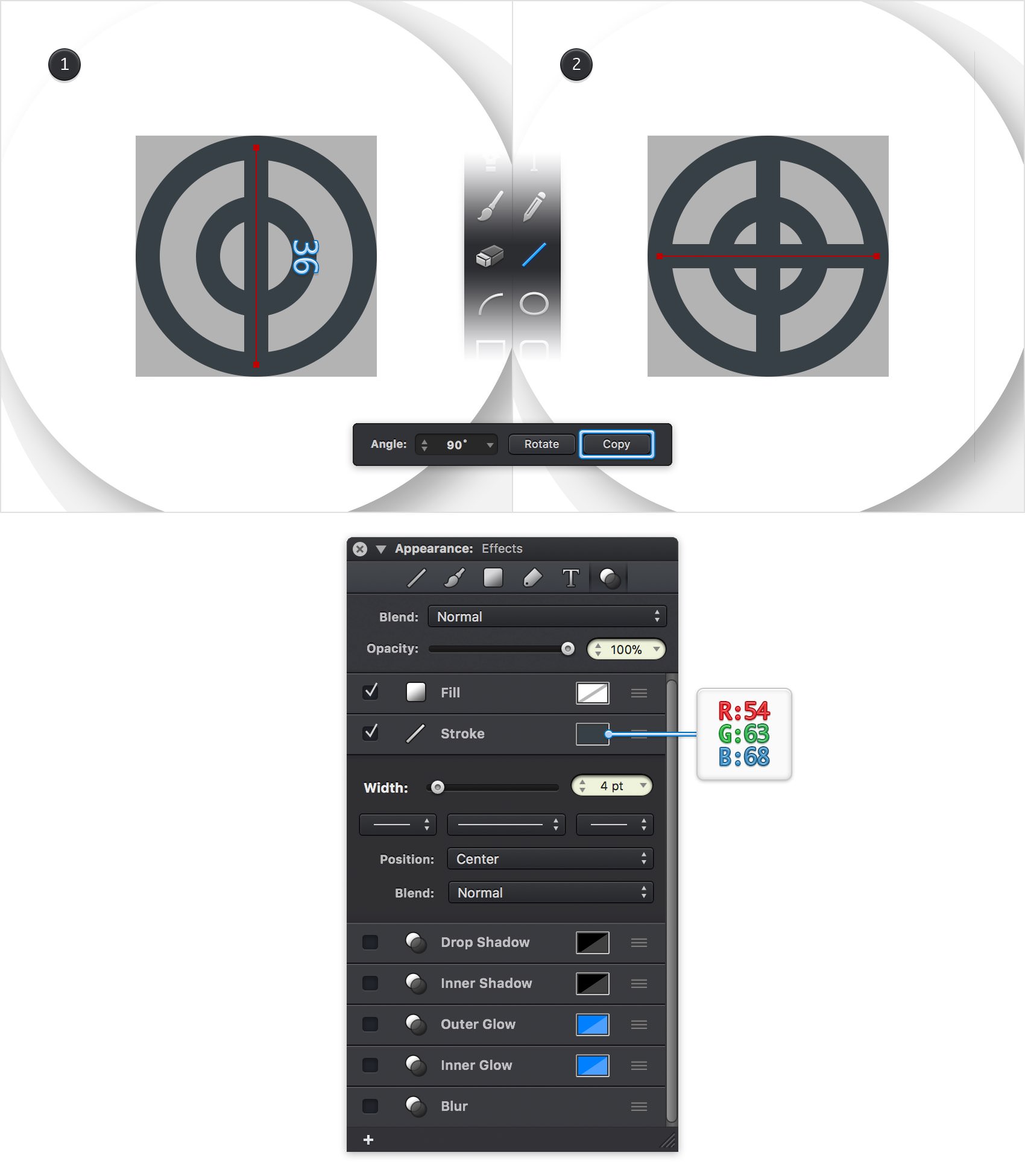
Step 25
Move up to your next black square. Pick the Rounded Rectangle Tool (Shift + M), focus on the Tool Options bar and set the Corner Radius to 15 pt. Create a 36 x 36 px shape, fill it with R=54 G=63 B=68 and place it as shown in the first image.
Switch to the Rectangle Tool (M), create a 40 x 18 px shape and place it exactly as shown in the second image.
Select both shapes made in this step and click the Subtract command from the Path Tools pane. In the end, your shape should look like in the fourth image.
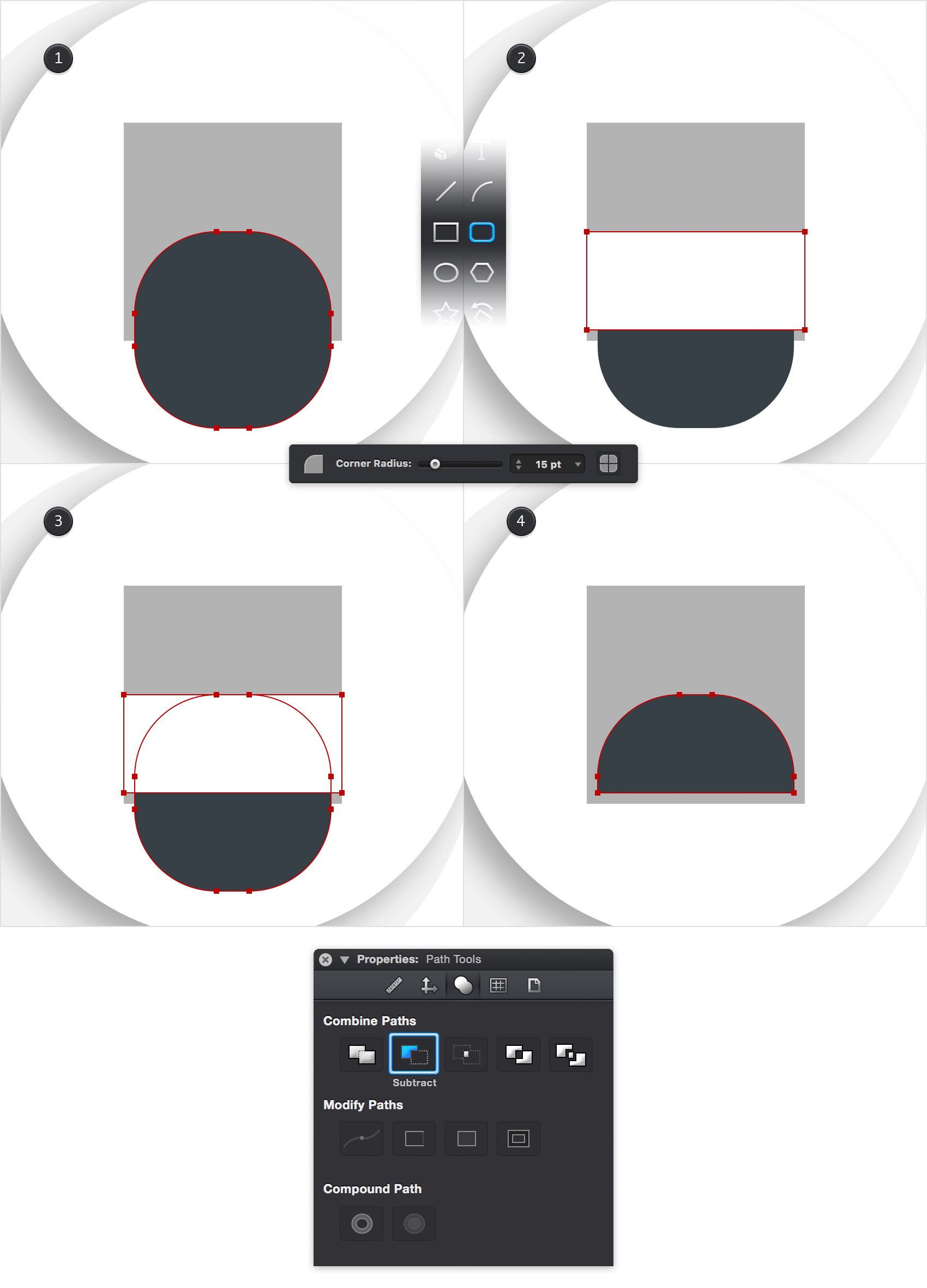
Step 26
Make sure that the shape made in the previous step stays selected and focus on the Stroke pane from the Appearance panel.
First, hit Shift + X to inverse the Fill to Stroke attributes. Next, drag the Line Weight slider to 4 pt, be sure that the Position is set to Center and don't forget to check the Rounded Join button. Once you're done, copy the style of this shape (Option + Command + C).
Pick the Ellipse Tool (O) and create an 18 px circle. Place it as shown in the second image and paste the style (Option + Command + V).
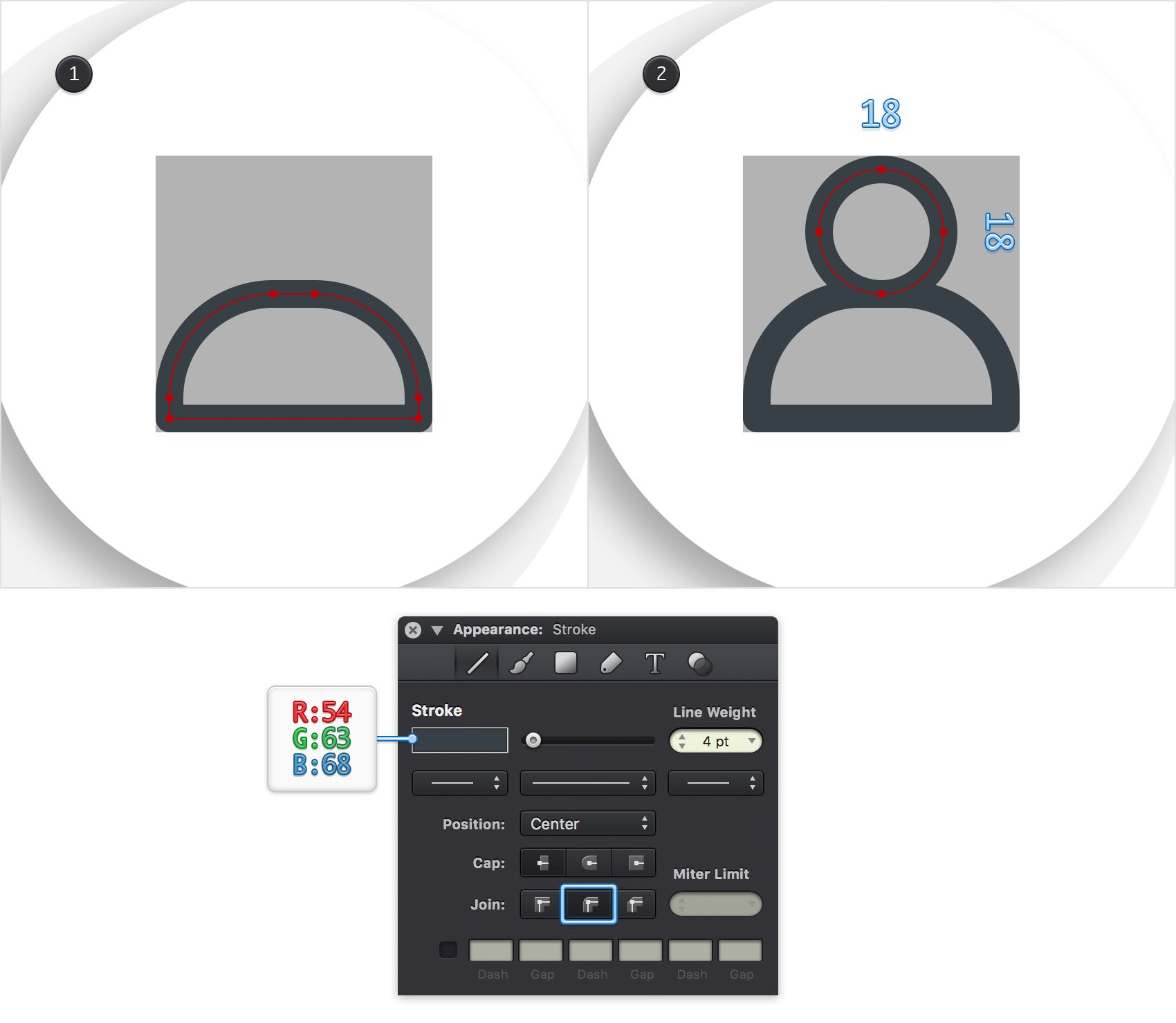
Step 27
Move up, to your next black square. Pick the Rounded Rectangle Tool (Shift + M) and set the Corner Radius to 5 pt. Create a 36 x 26 px shape, place it as shown in the first image and paste the style (Option + Command + V).
Switch to the Rectangle Tool (M) and create a 6 x 10 px shape. Place it as shown in the second image and paste the style (Option + Command + V).
Using the Line Tool (L), create a 20 px, vertical path. Place it as shown in the third image, paste the style (Option + Command + V) and focus on the Stroke pane. Check the the Rounded Cap button.
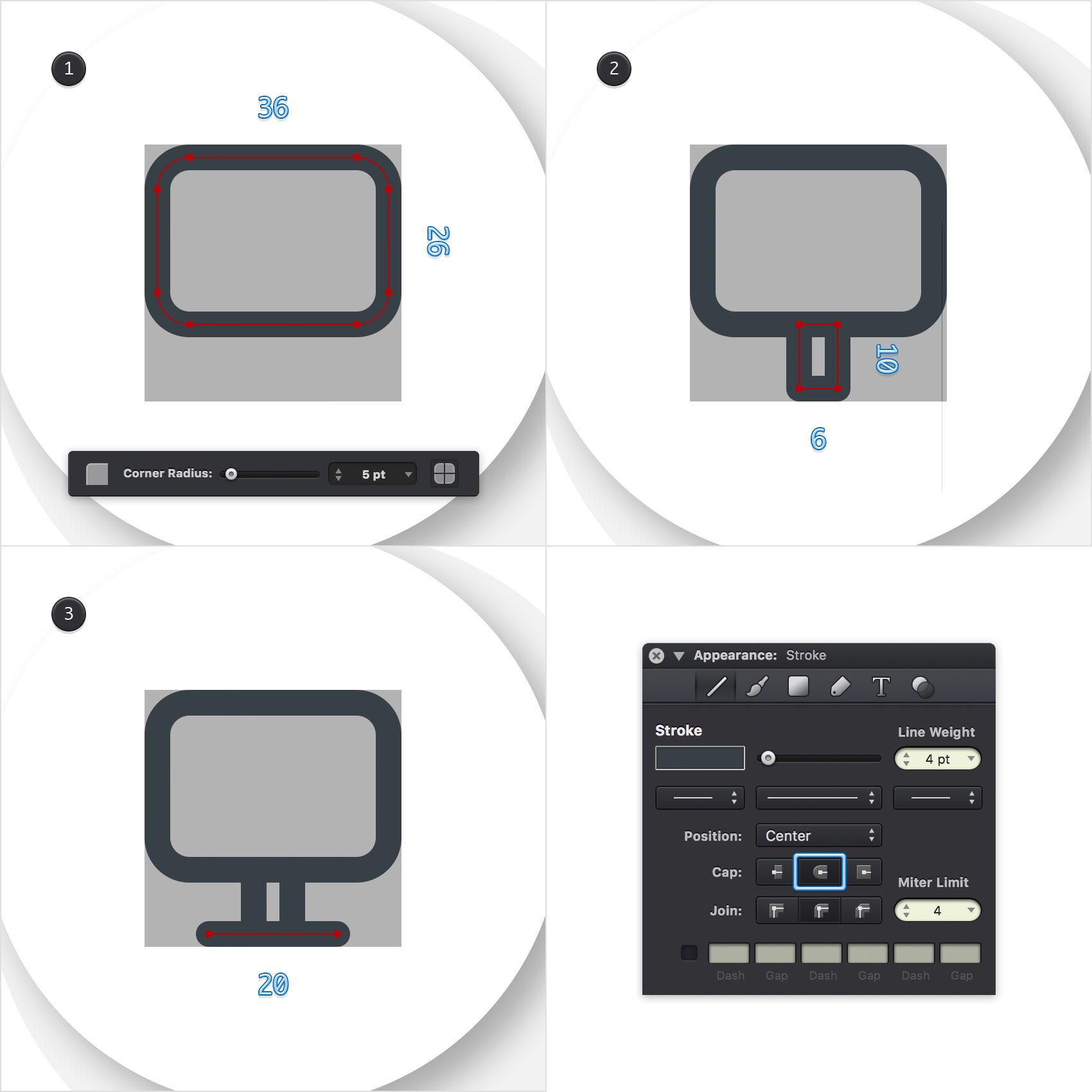
Step 28
Move up, to your next black square. Pick the Ellipse Tool (O) and create a 16 px circle. Place it as shown in the first image and paste the style (Option + Command + V).
Switch to the Rectangle Tool (M) and create two, 2 px squares. Place these new shapes as shown in the second image and paste the style (Option + Command + V).
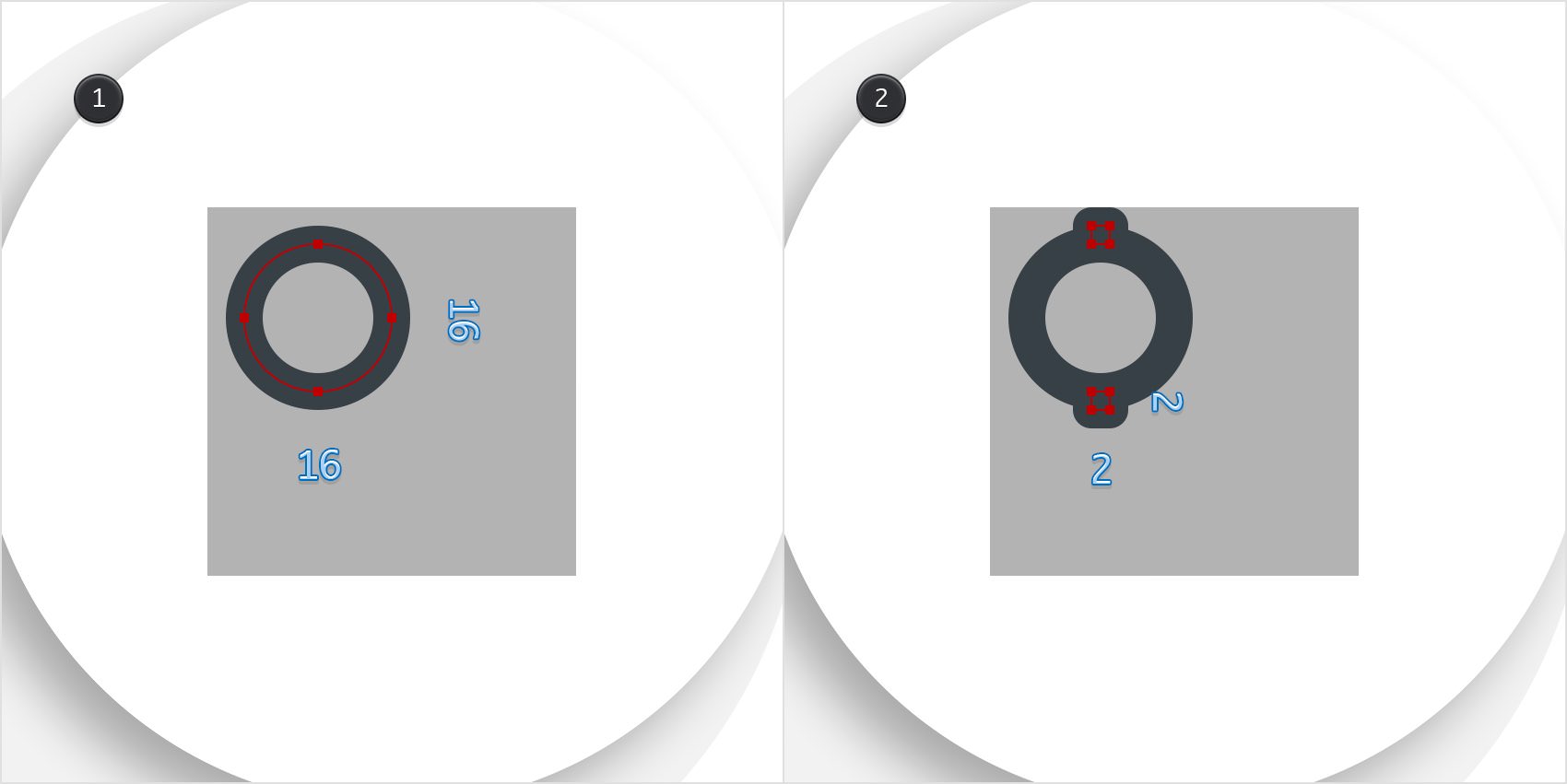
Step 29
Select both tiny squares added in the previous step and pick the Rotate Tool (R). Set the Angle to 45 degrees and then click that Copy button three times. In the end, things should look like in the third image.
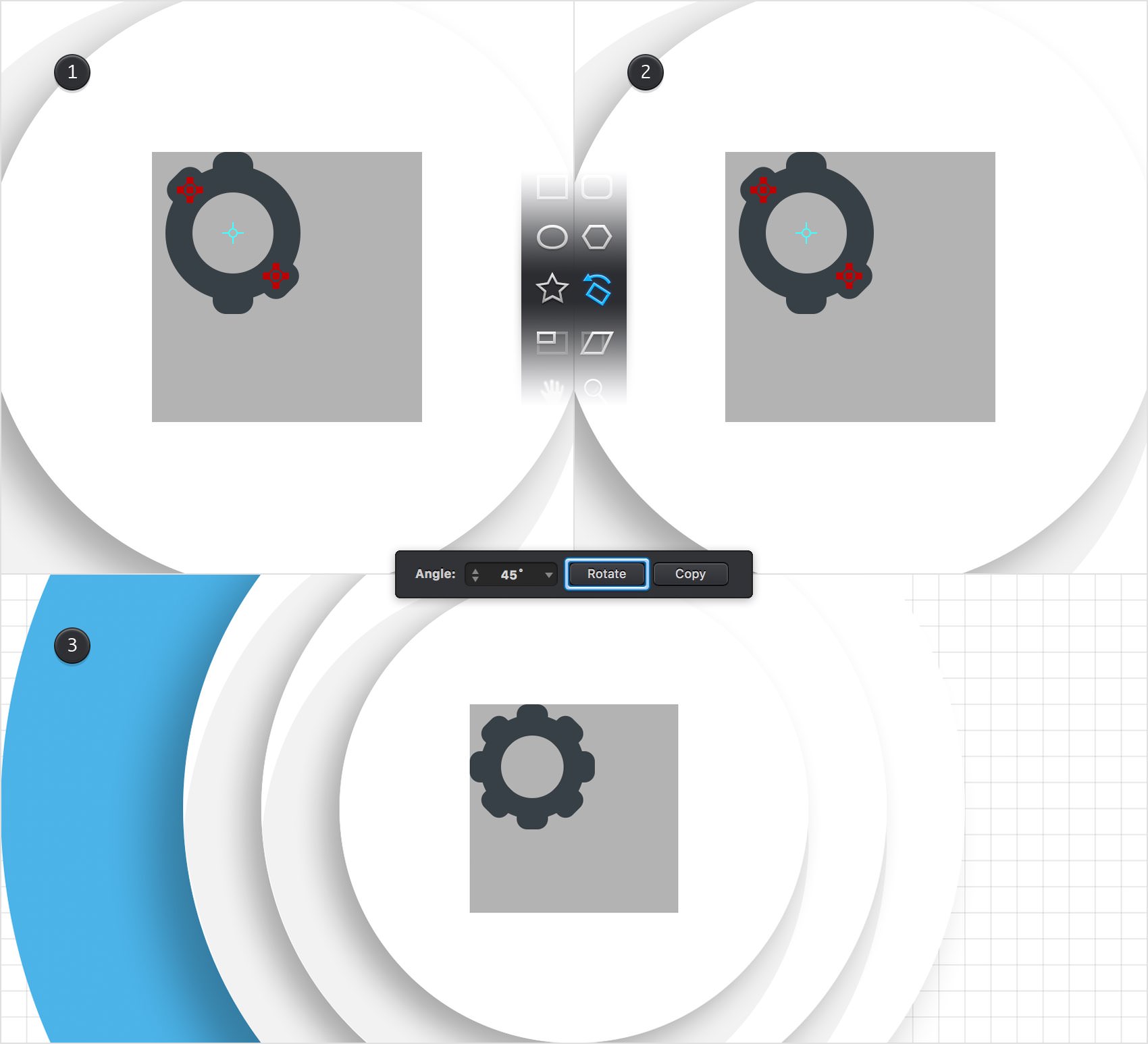
Step 30
Select the shapes highlighted in the first image and hit Command + G to Group them. Make a copy of this group and place it as shown in the second image.
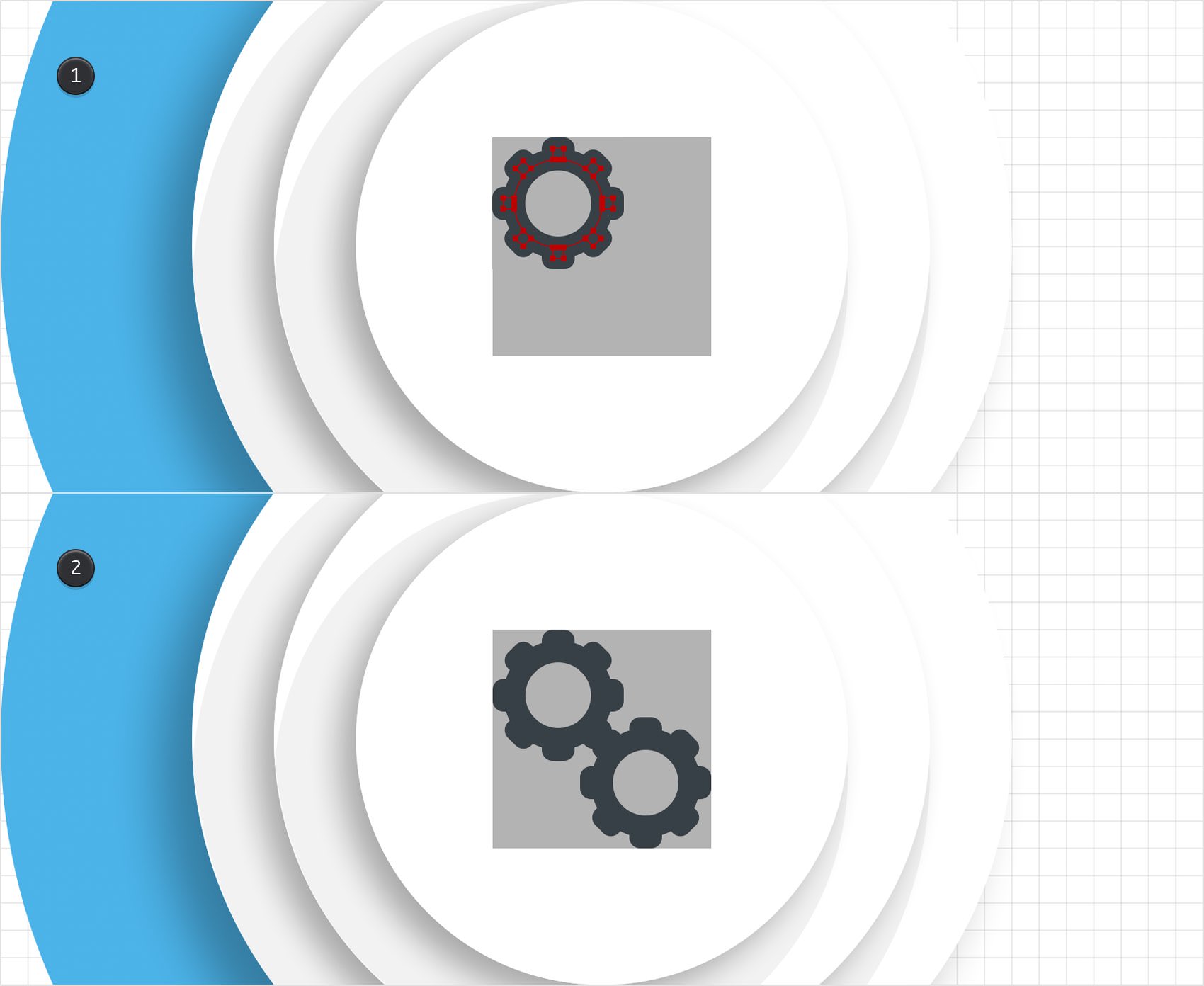
Step 31
Select your top group and pick the Rotate Tool (R). Set the Angle to 15 degrees and then click that Rotate button. Select the other group and do the same thing.
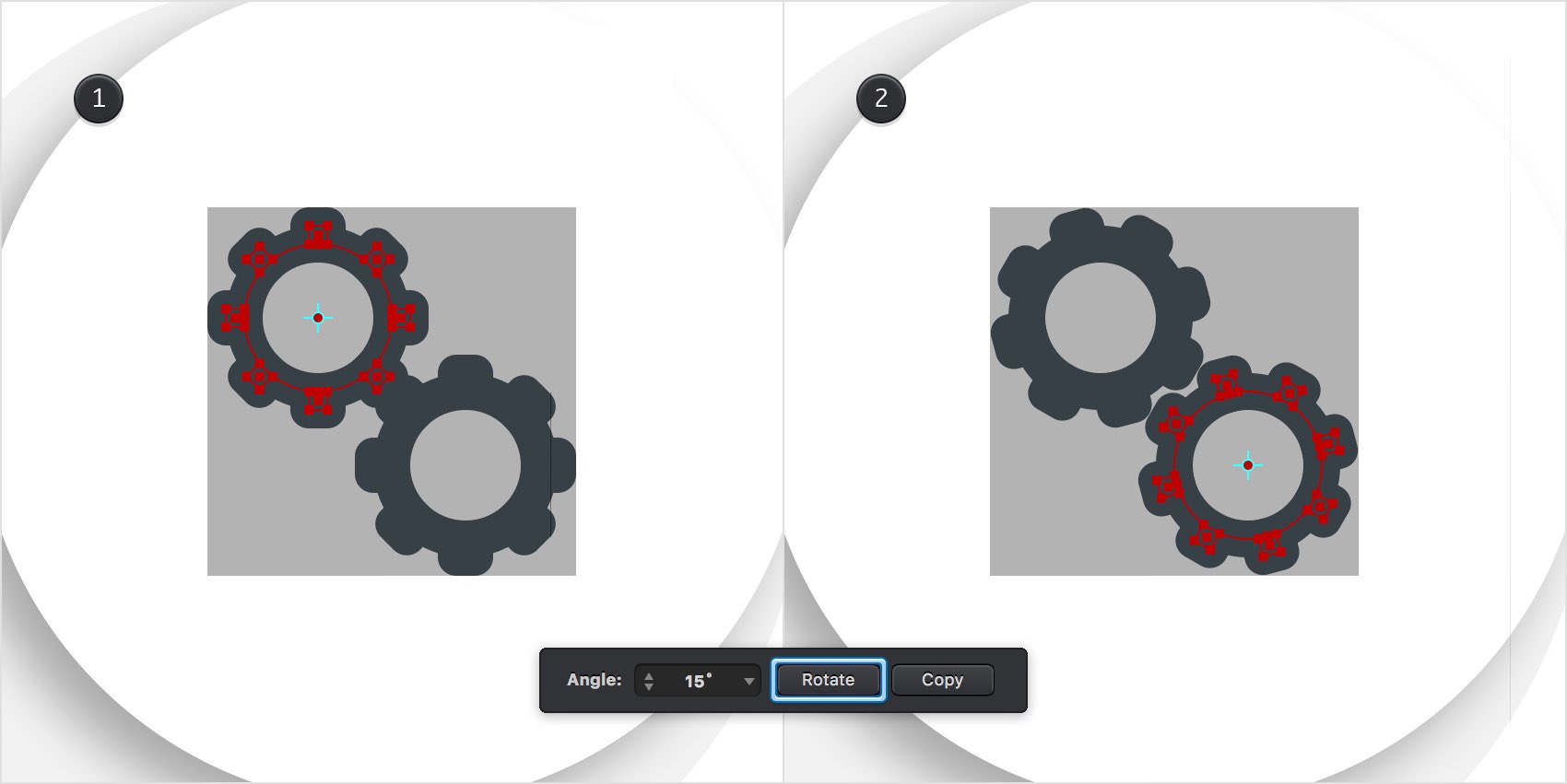
Step 32
Focus on the Layers panel and select the "Black" layer. Right click on it and go to Delete Layer.
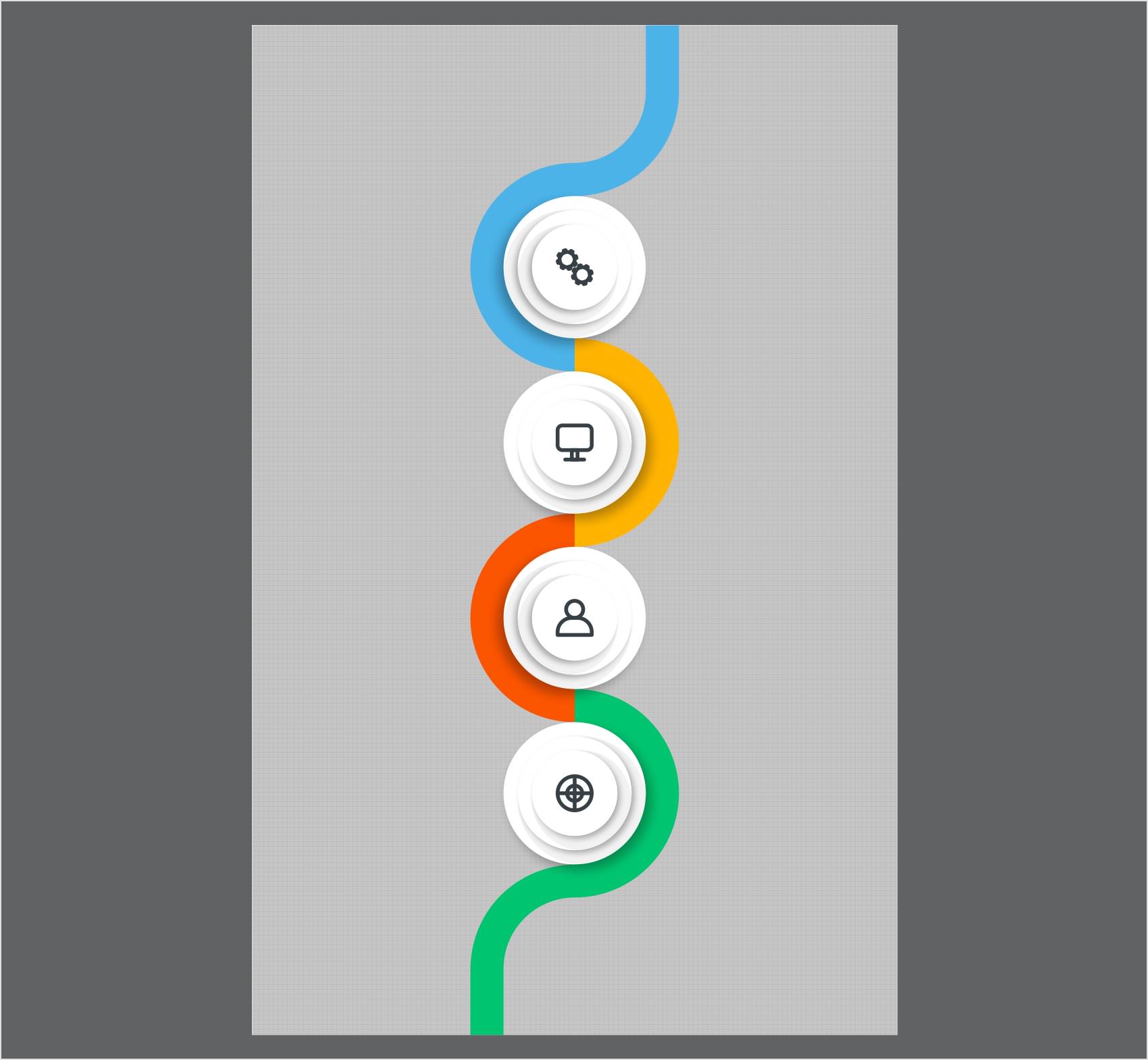
Step 33
Go to the Layers panel and add a new layer. Make sure that it lies in the top of the panel, rename it "Text" and keep it selected
Again, you will need a grid every 5 px. Return to the Grid pane from the Properties panel and enter 5 px in both Spacing boxes.
Pick the Rectangle Tool (M) and create a 20 px square. Fill this new shape with R=54 G=63 B=68 and place it as shown in the first image. Keep focusing on this square and pick the Path Selection Tool (A). First, select the top anchor point and remove it using the Delete key. Next, select the bottom anchor point and drag it 10 px up. In the end, your square should turn into a triangle, as shown in the third image.
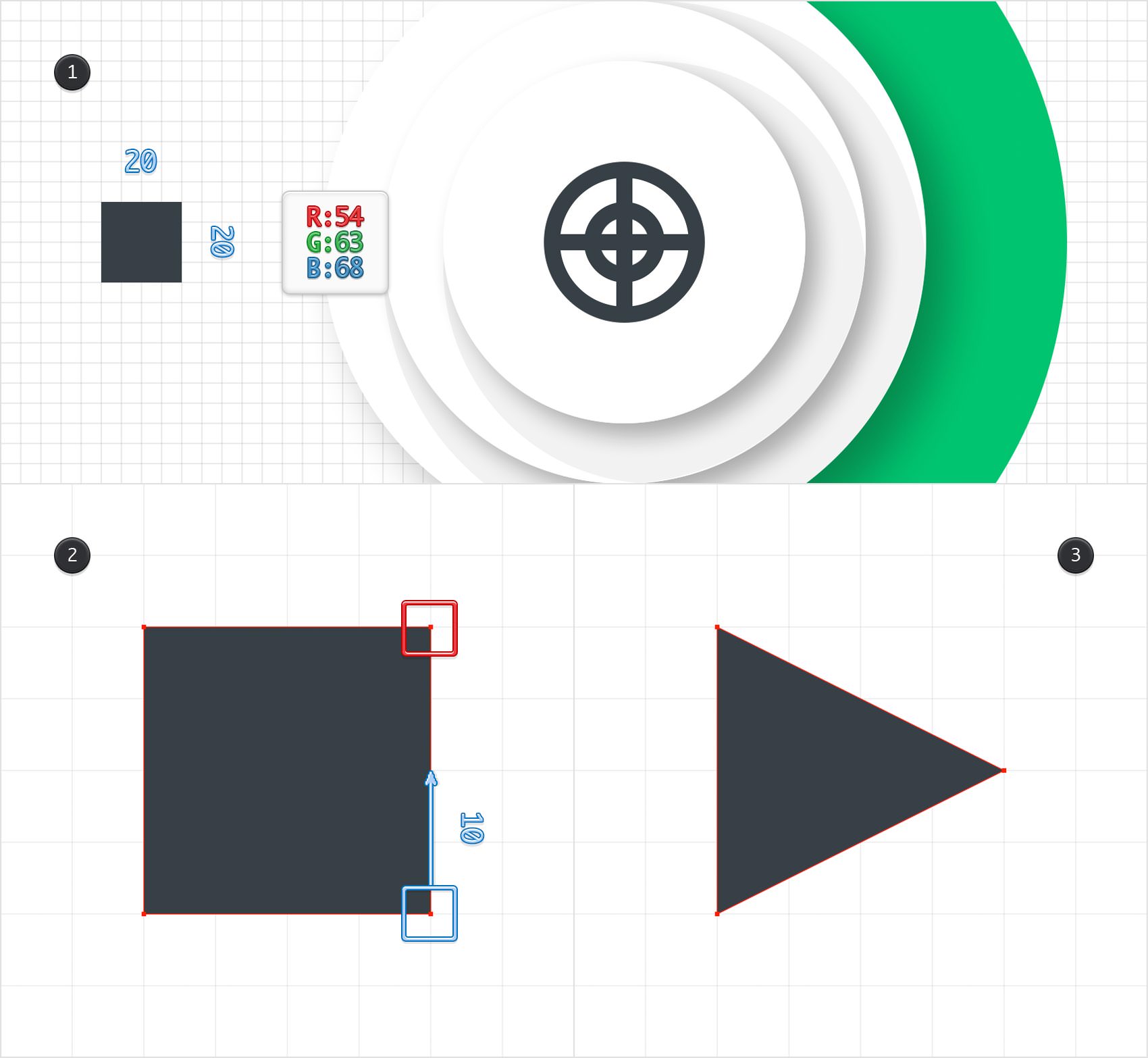
Step 34
Make three copies of your triangle. Select two of these copies and rotate them 180 degrees. Place the three copies as shown in the following image.
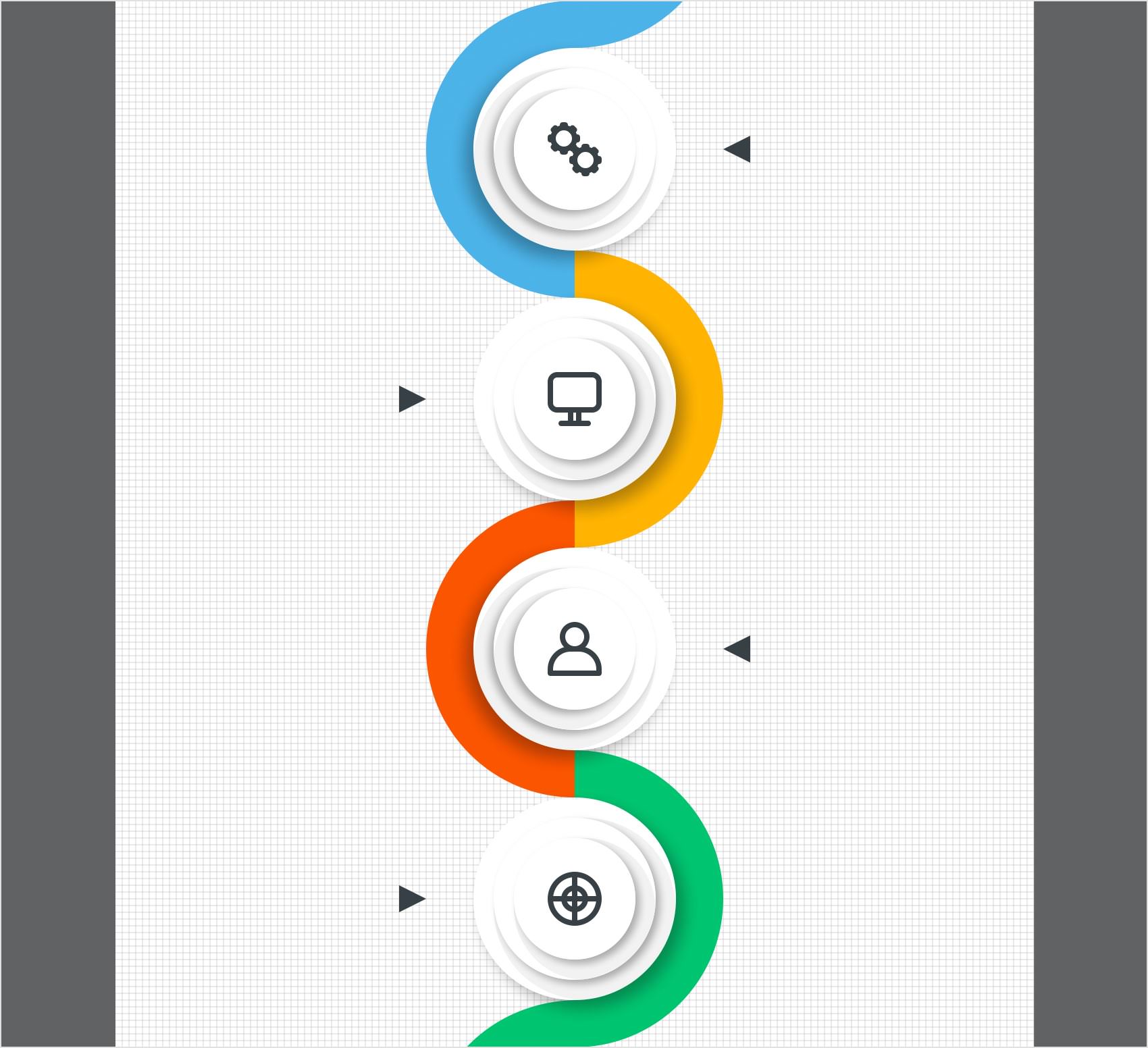
Step 35
Pick the Text Tool (T) and focus on the Tool Options bar. Select the Futura font and change the Style to Bold. Set the Size to 15 pt, change the color to R=54 G=63 B=68 and set the Text Alignment to Centered. Make sure that the Line Spacing is set to 1 and the Character Spacing to Auto, and then move to your canvas.
Click and drag to create a 130 x 20 px text field, place it as shown in the first image and add the "STEP 01" piece of text.
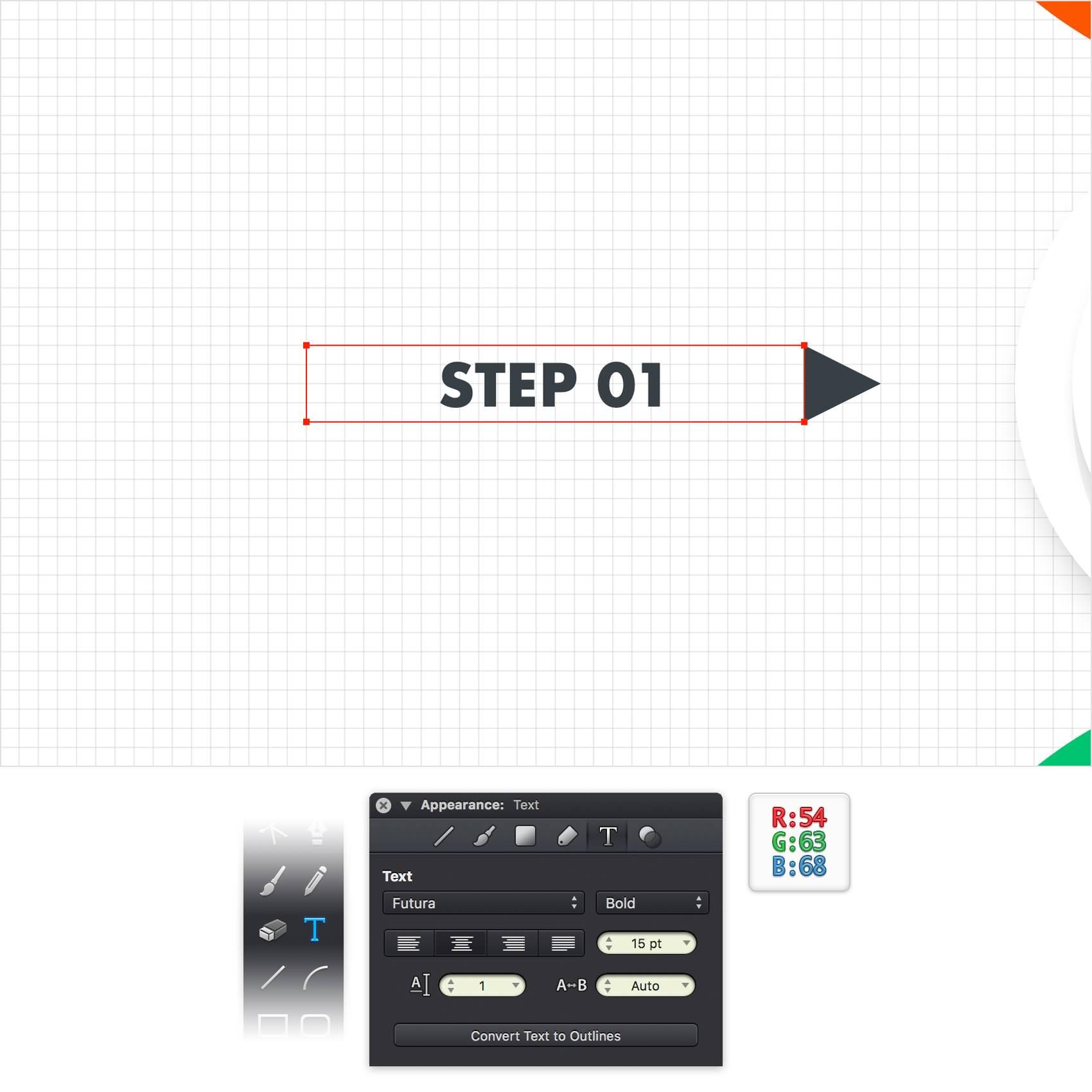
Step 36
Make sure that the Text Tool (T) is still active and lower the Size to 8 pt. Create a 130 x 10 px text field, place it as shown in the following image and add the "IDENTIFY THE PROBLEM" piece of text.
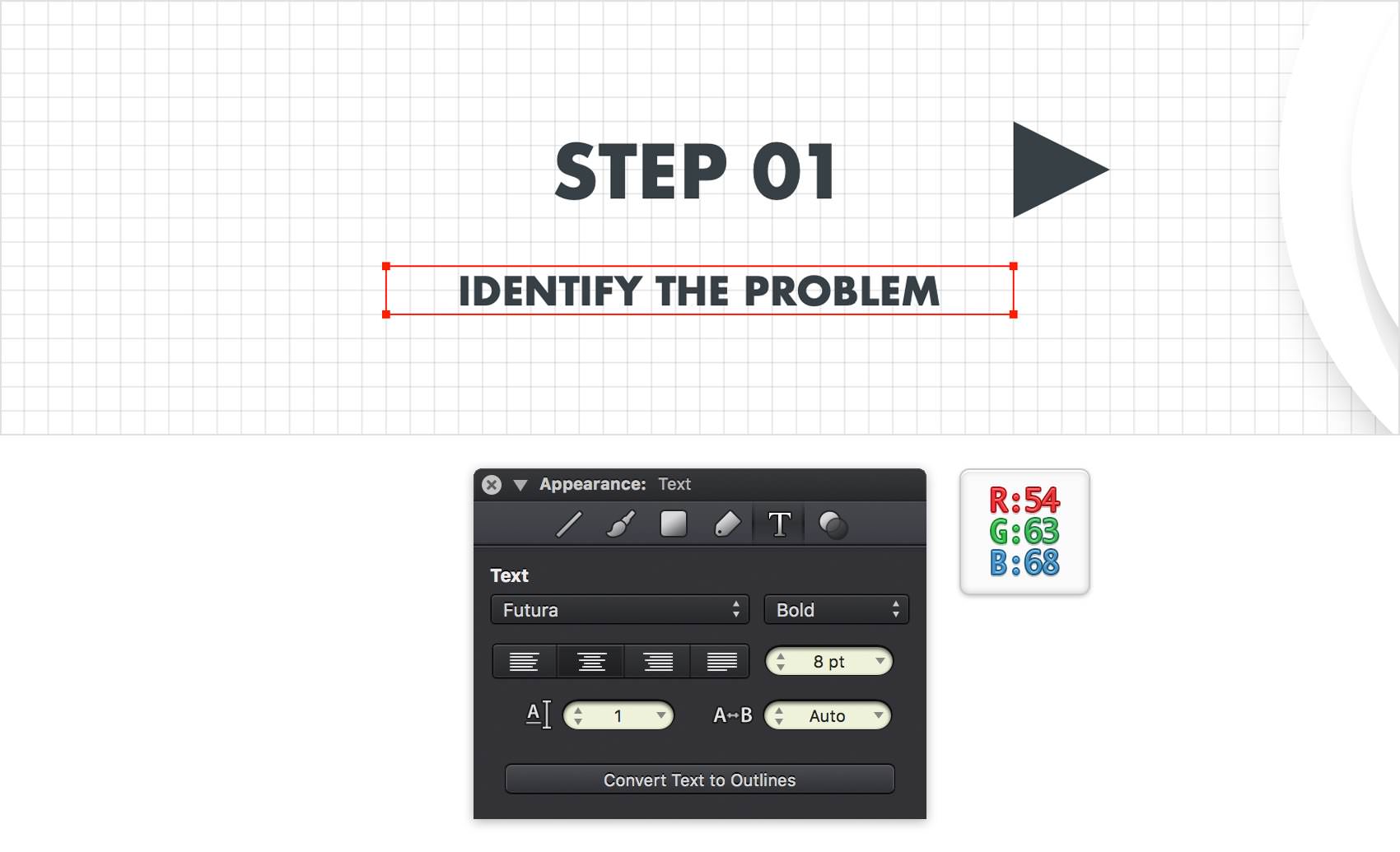
Step 37
Make sure that the Text Tool (T) is still active, change the Style to Medium Italic and increase the Size to 10 pt. Change the color to R=165 G=166 B=168 and then create a 130 x 75 px text field. Place it as shown in the following image and add the text shown below.
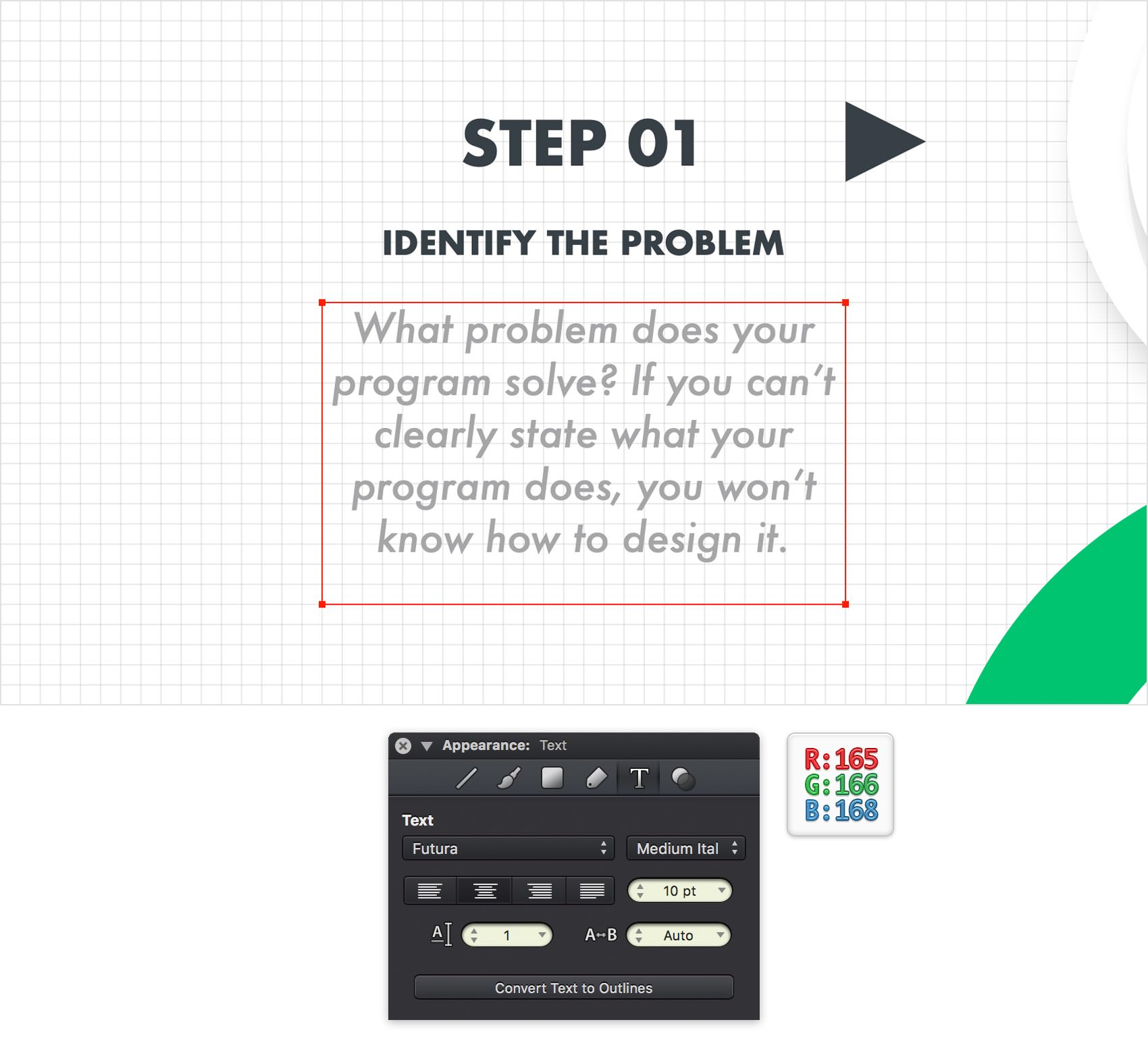
Step 38
Multiply your text fields, place the copies as shown below and don't forget to replace their content.

Step 39
Reselect the Text Tool (T), change the Style to Bold and increase the Size to 15 pt. Change the color back to R=54 G=63 B=68 and then create a 305 x 40 px text field. Place it as shown in the following image and add the text shown below.
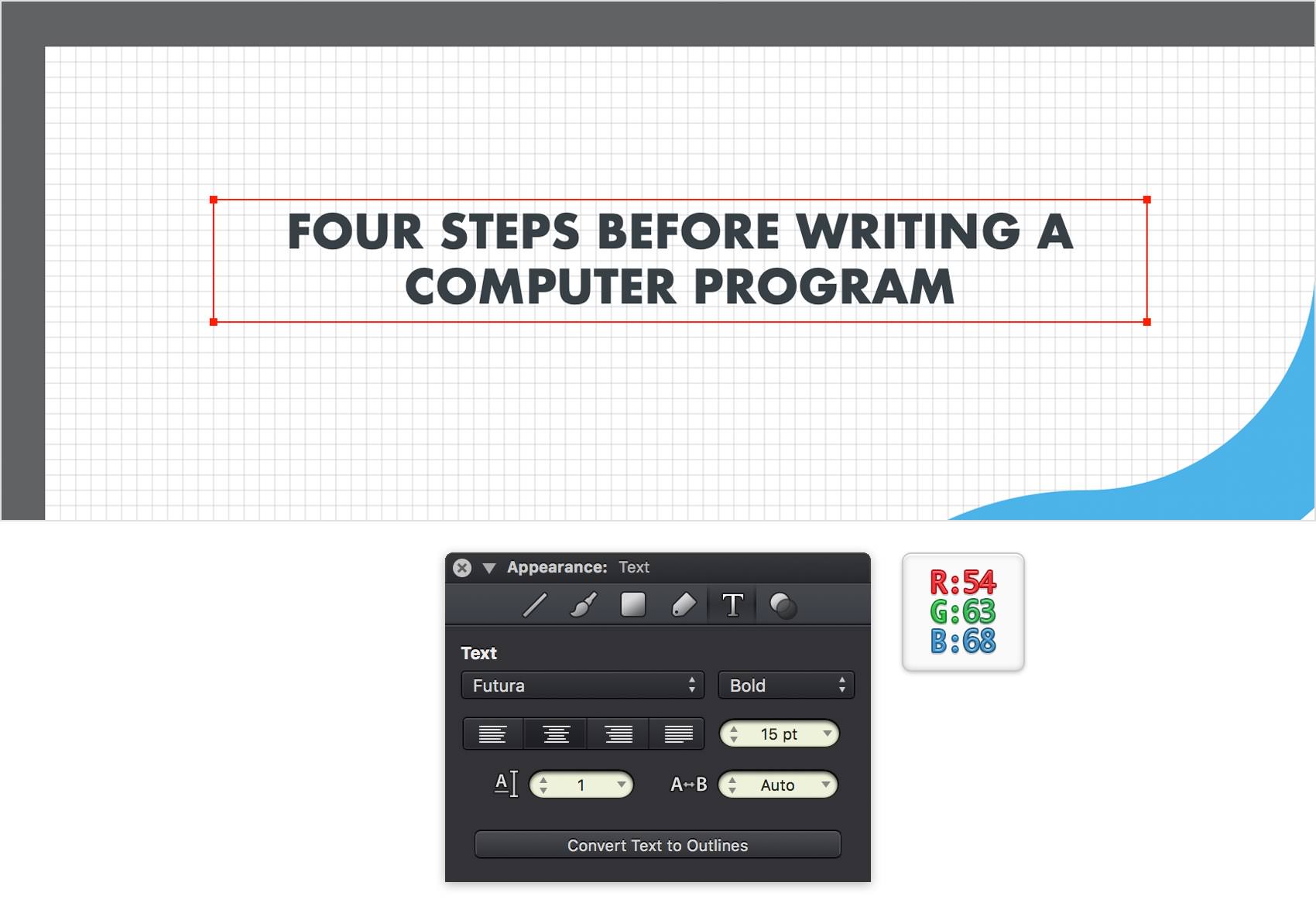
Step 40
Go to the Layers panel and add one last layer. Rename it "BG", drag it to the bottom of the panel and make sure that it stays selected.
Pick the Rectangle Tool (M) and create a 680 x 1065 px shape. Fill this rectangle with R=247 G=248 B=250 and make sure that it covers your entire cavans.
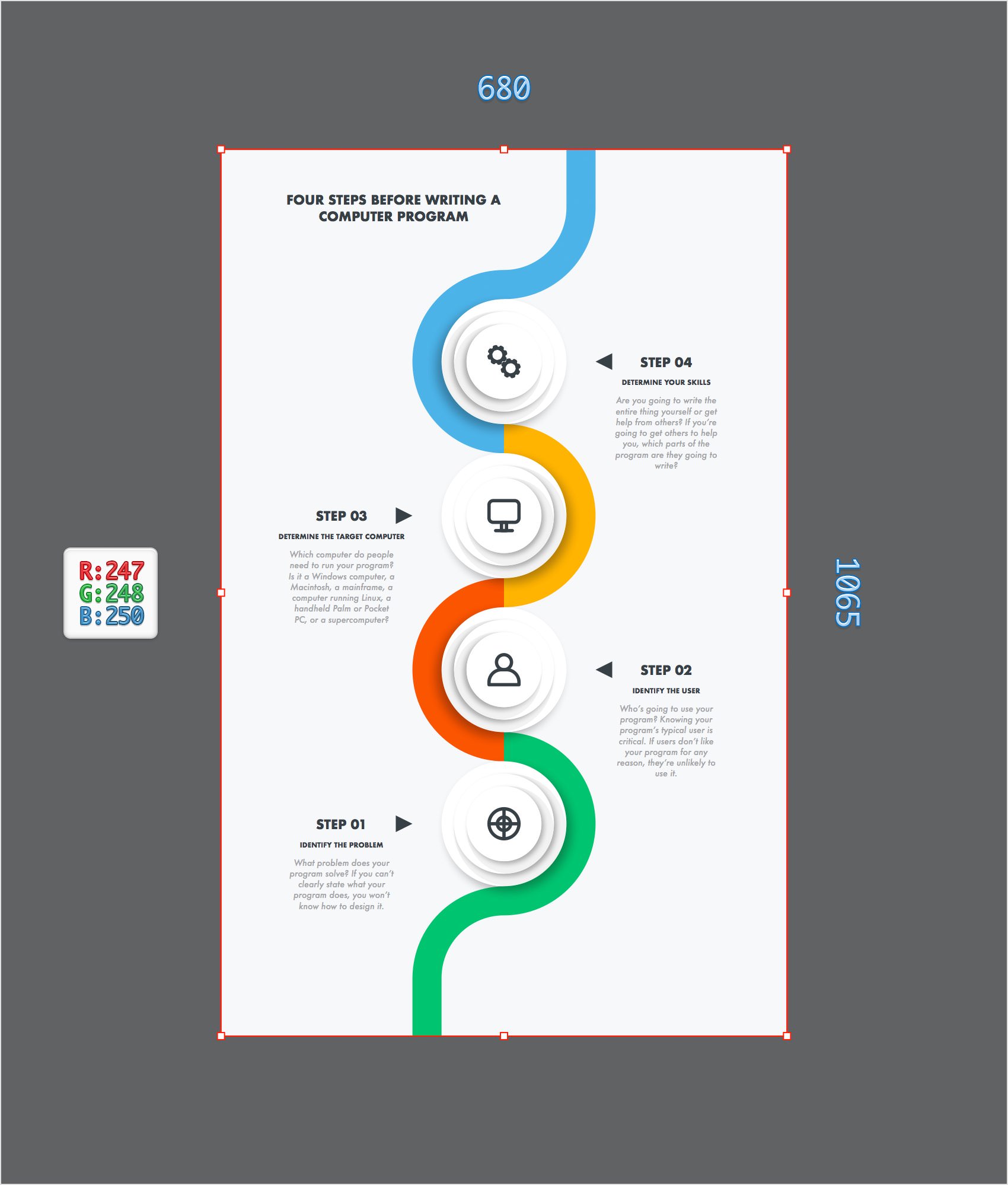
Finished Design
Congratulations, you've finished the tutorial!
Hope you've enjoyed learning some of the techniques and processes presented in these steps. As always, feel free to adjust the final design and make it your own.
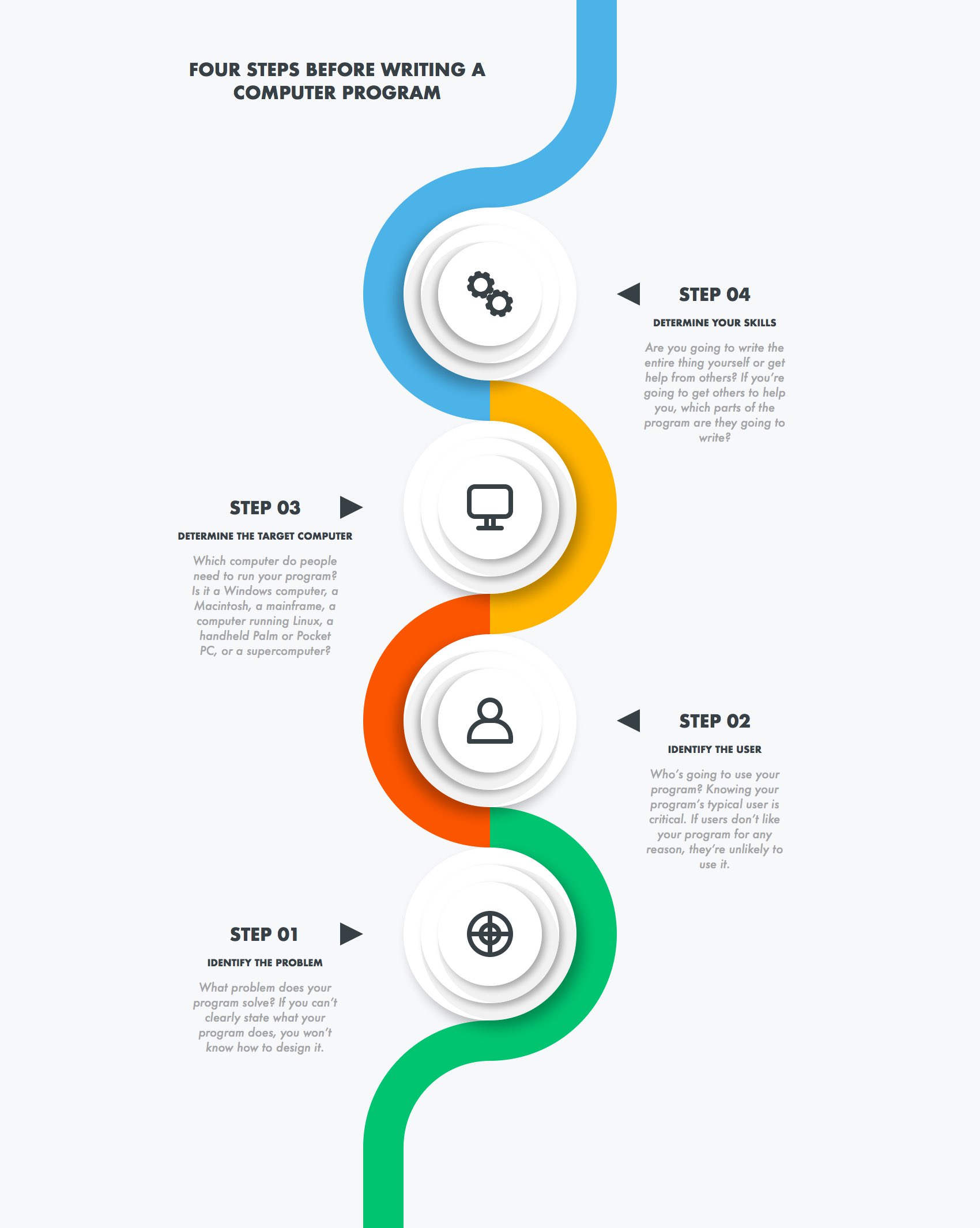
Download Graphic File:
stepsverticallnfographic.idraw 


